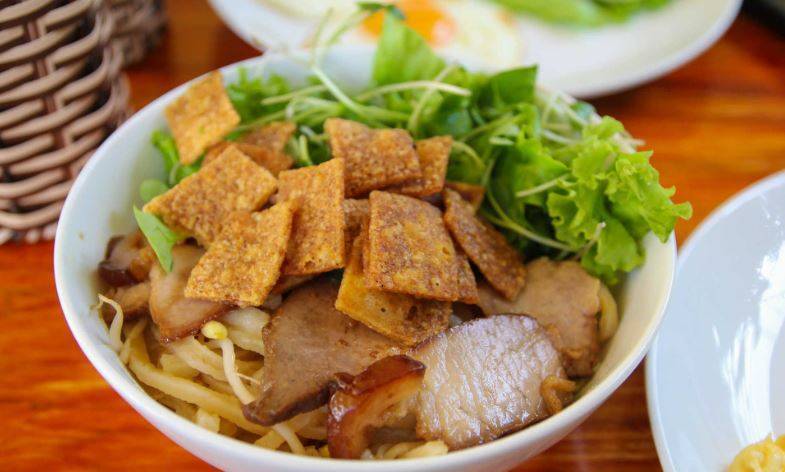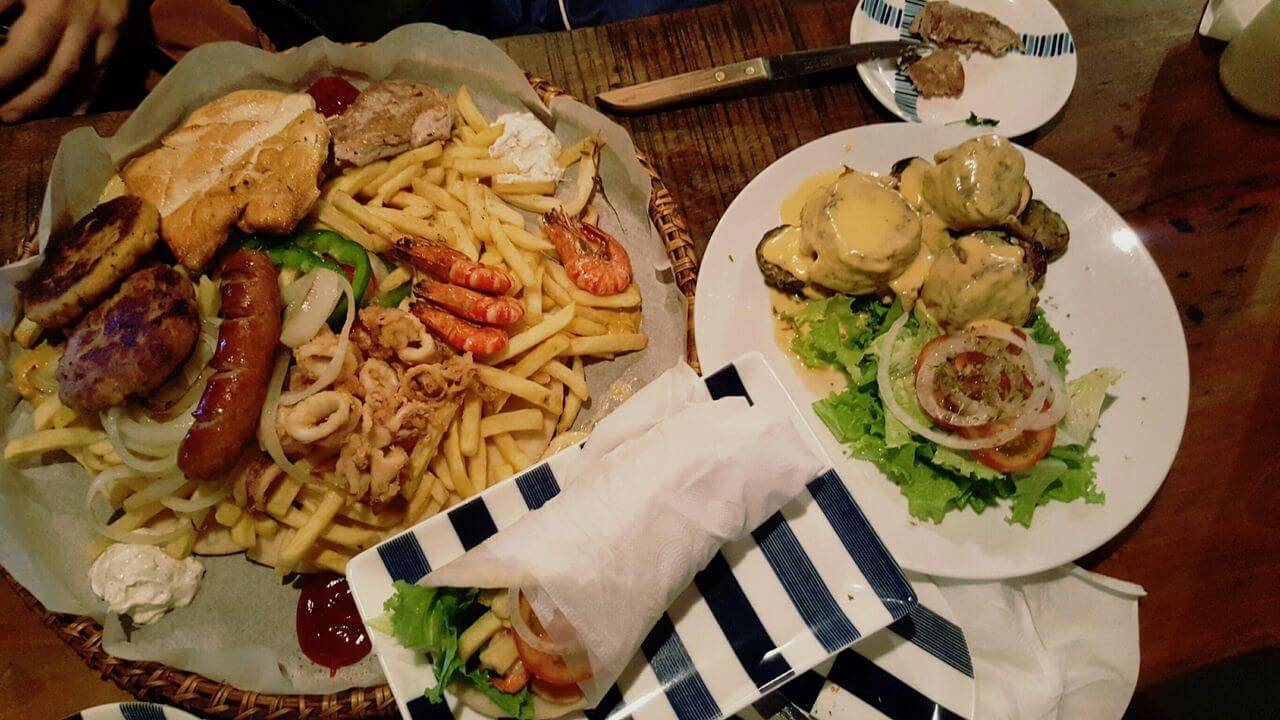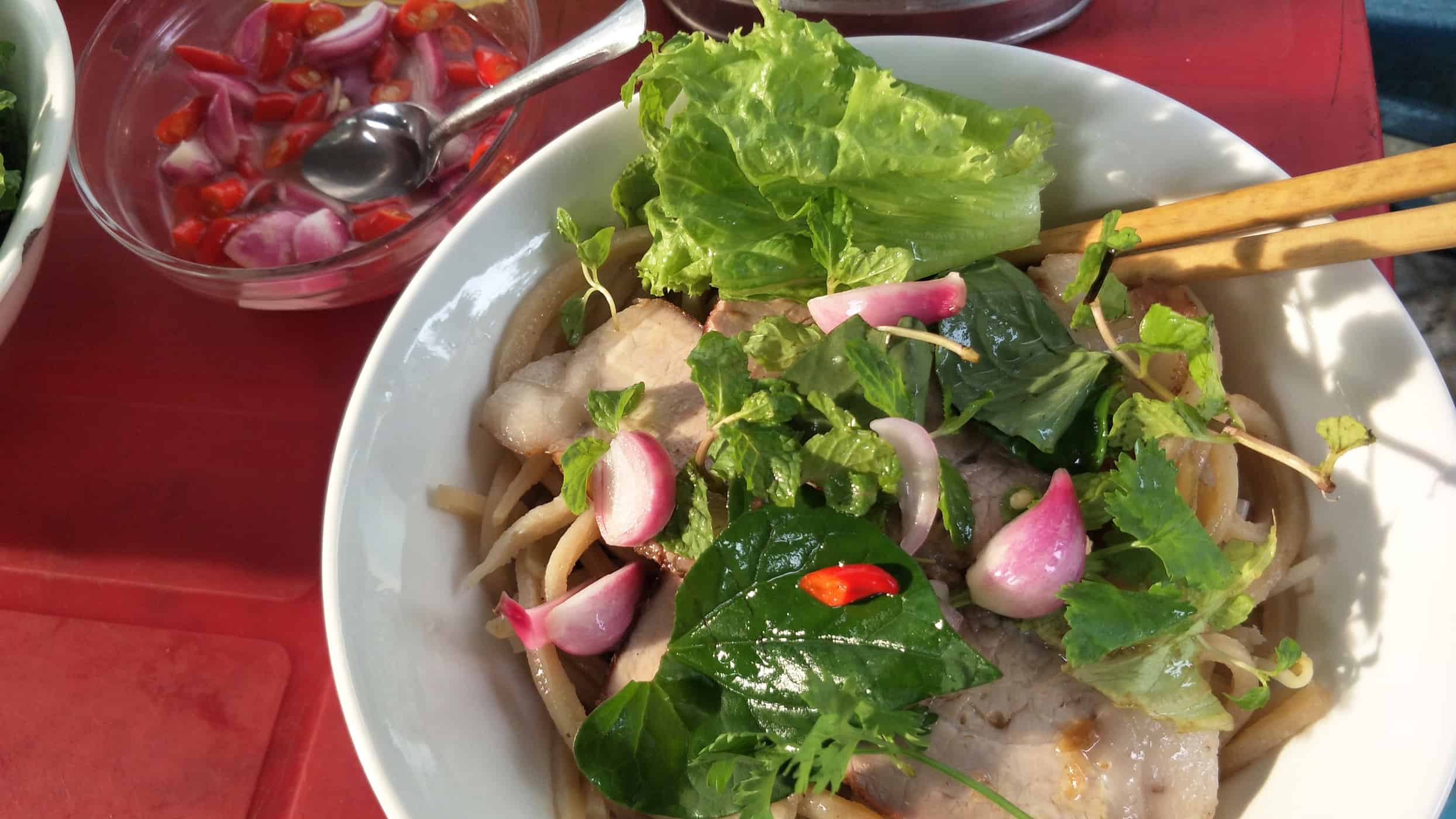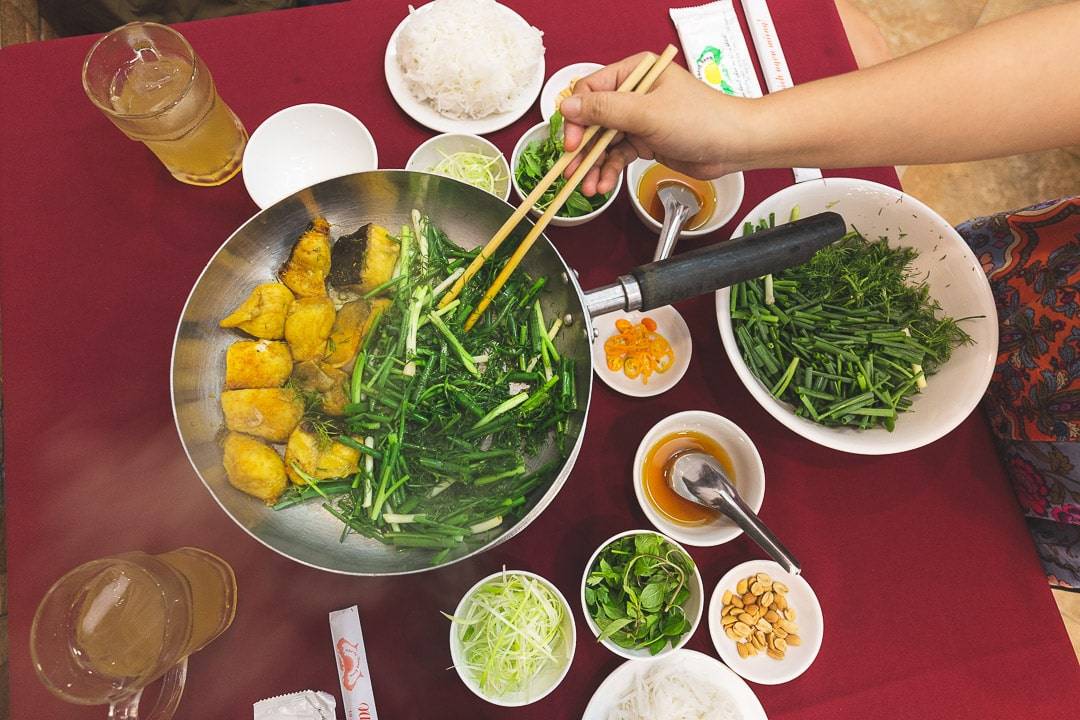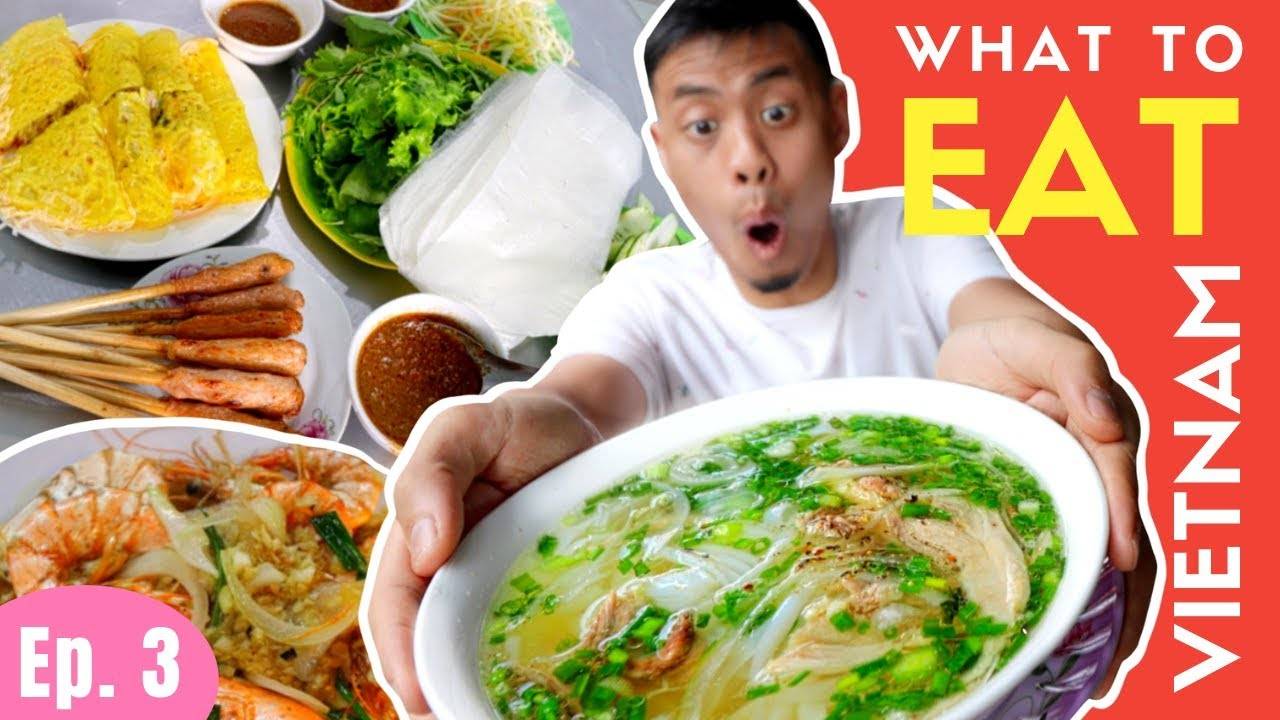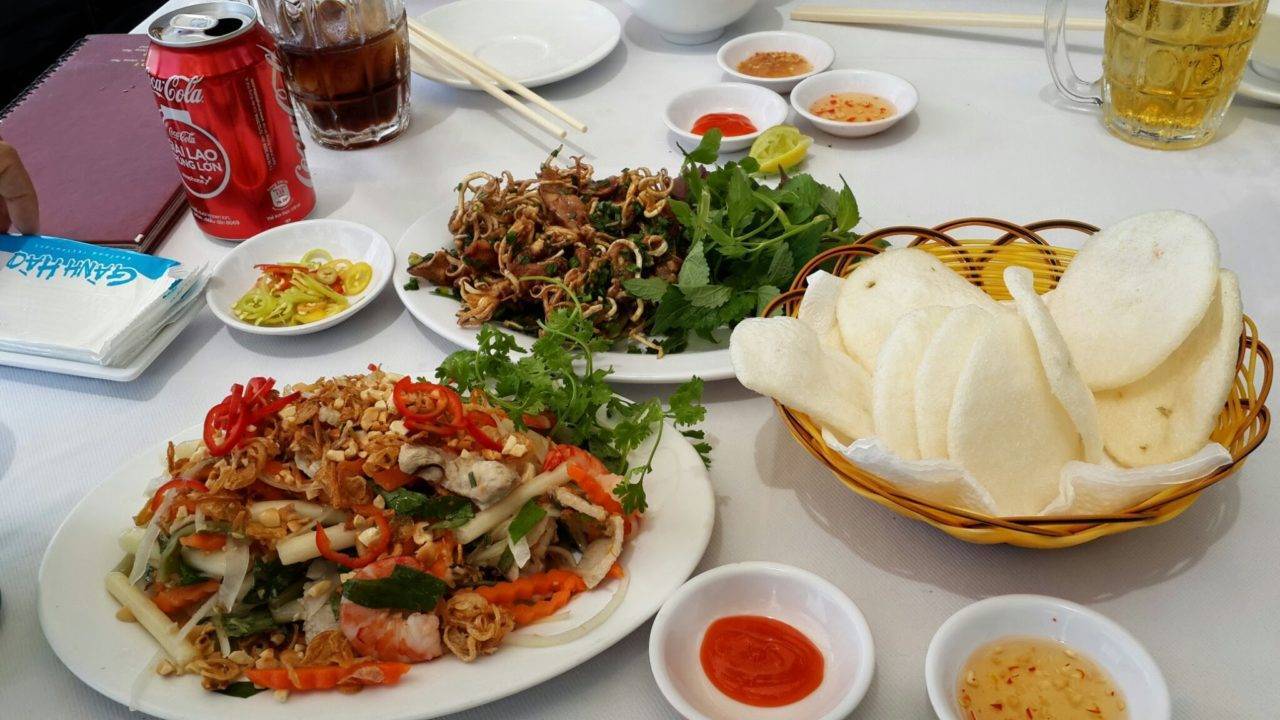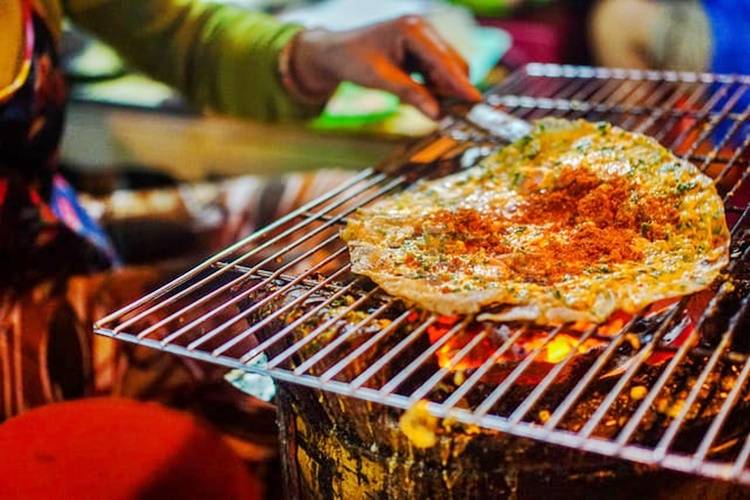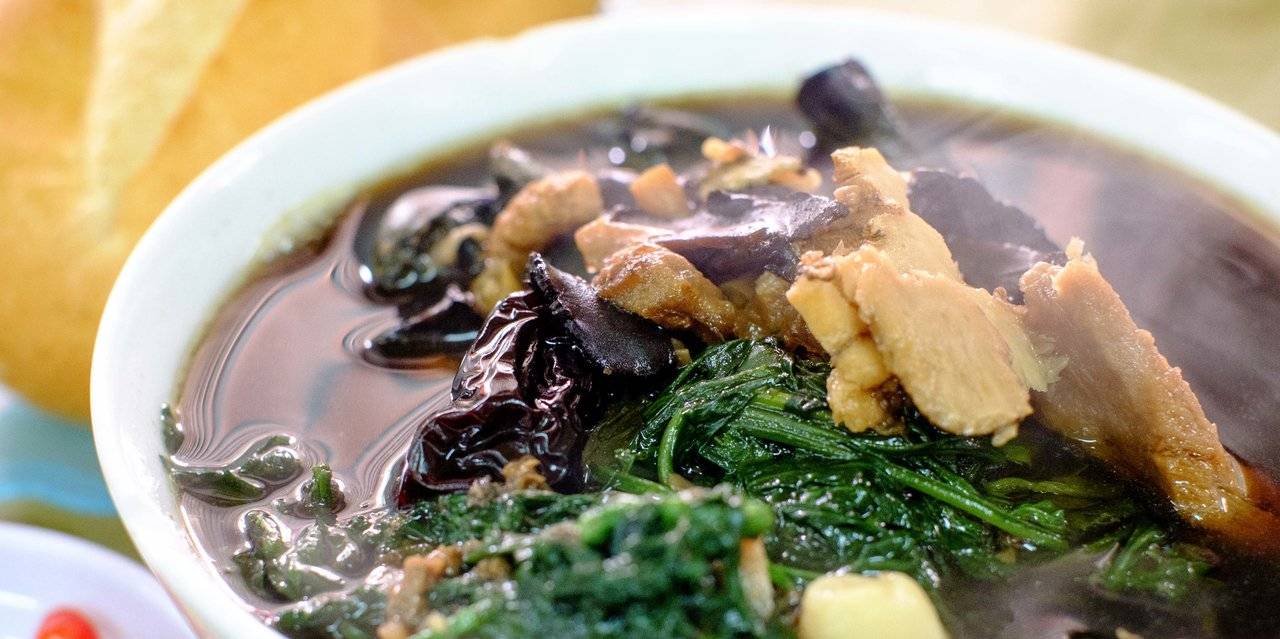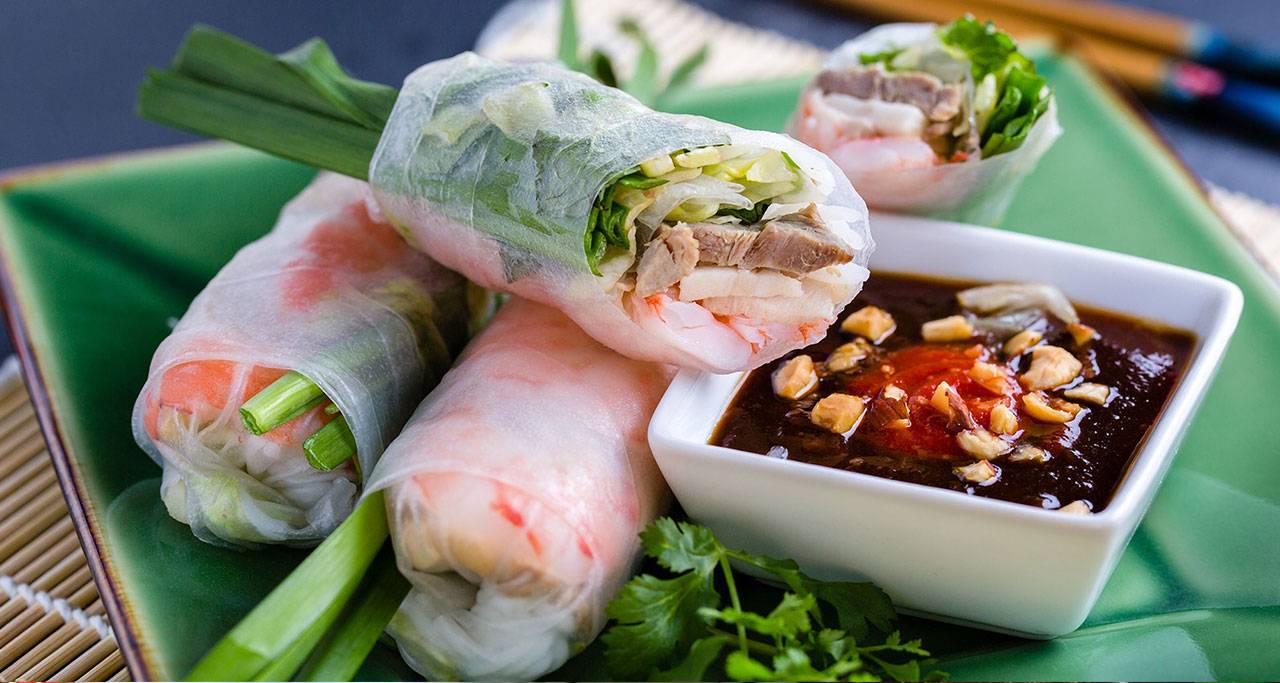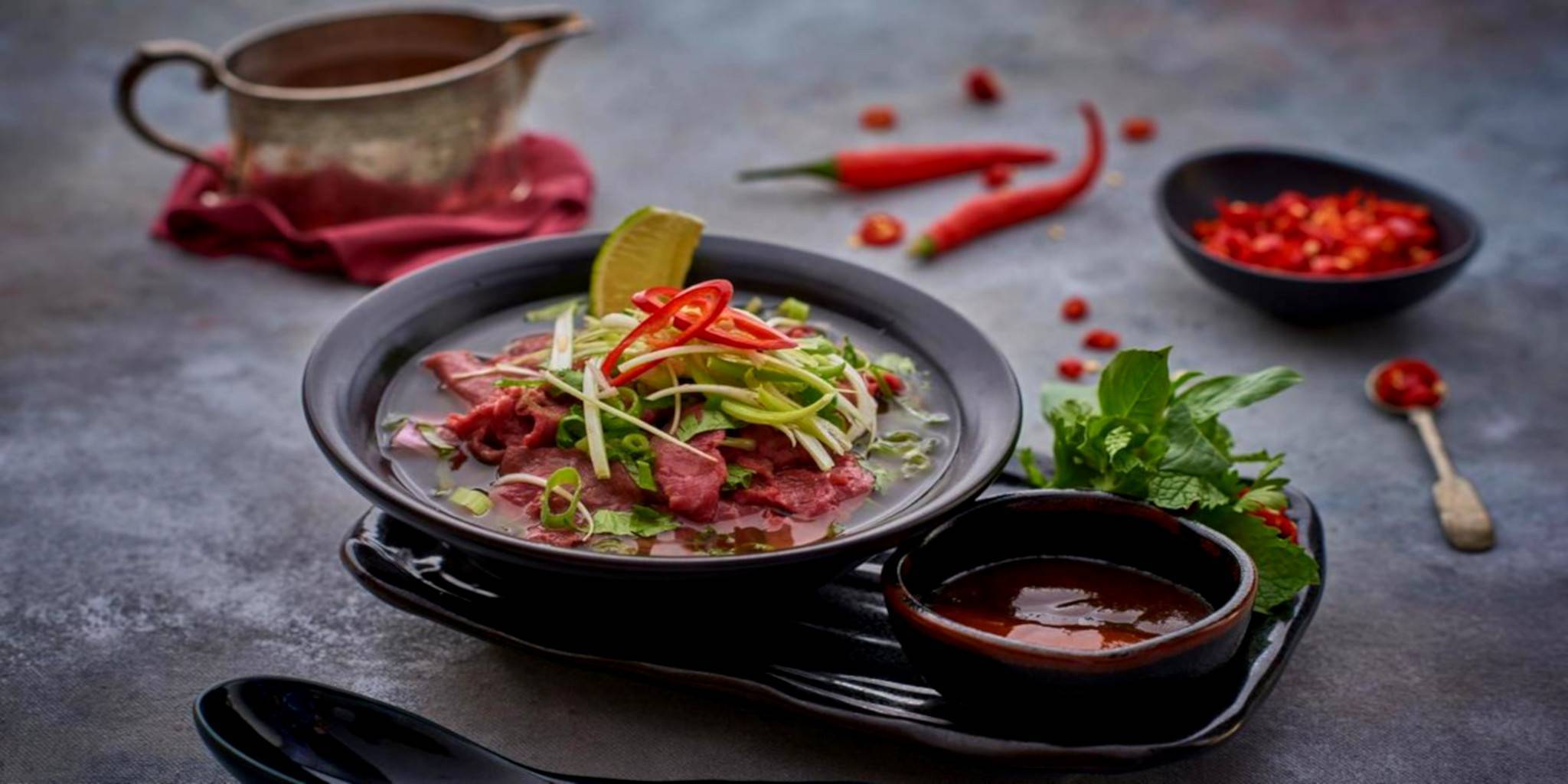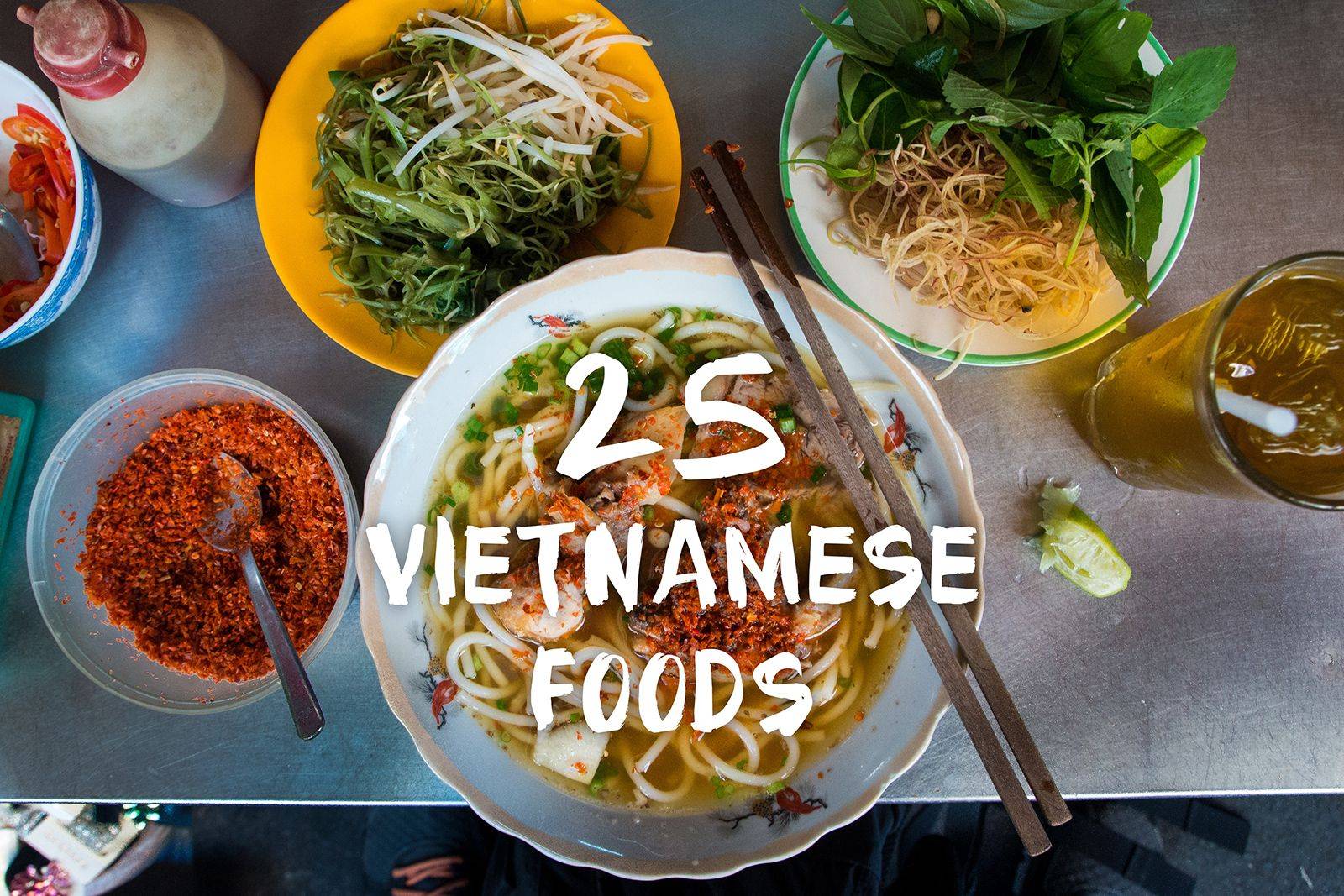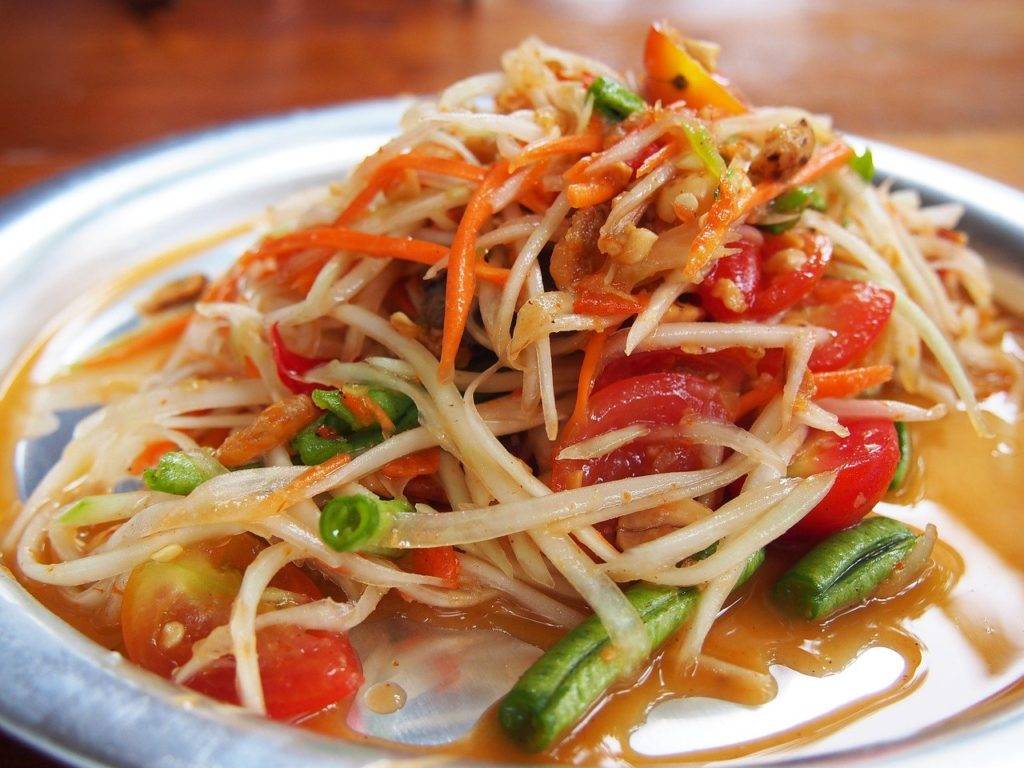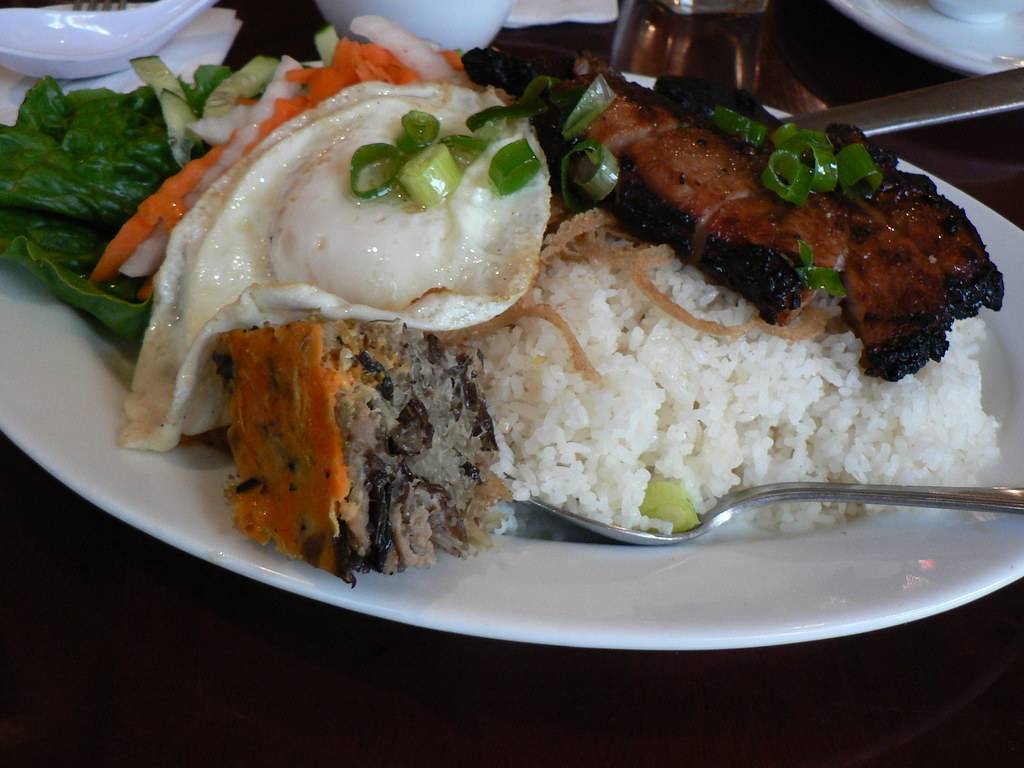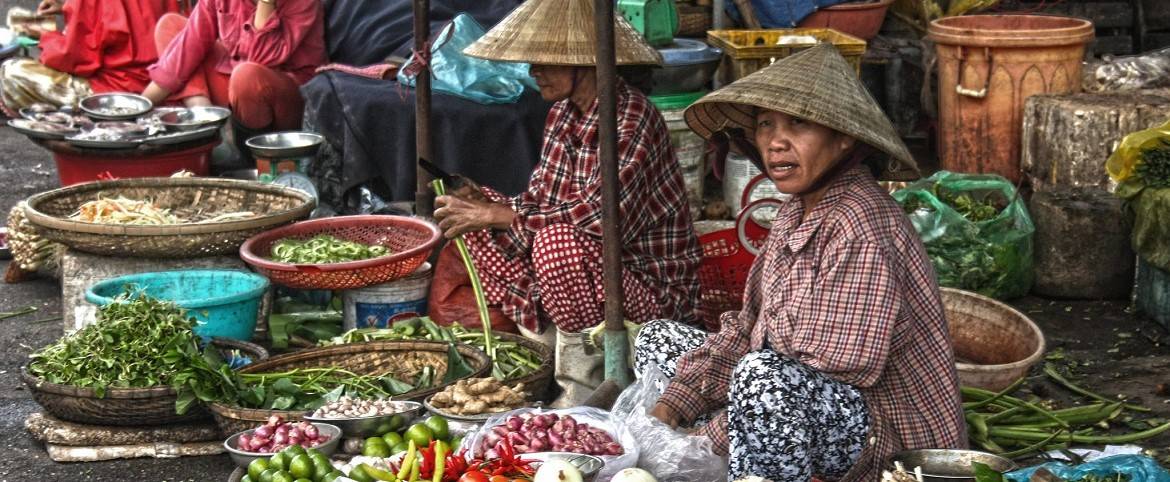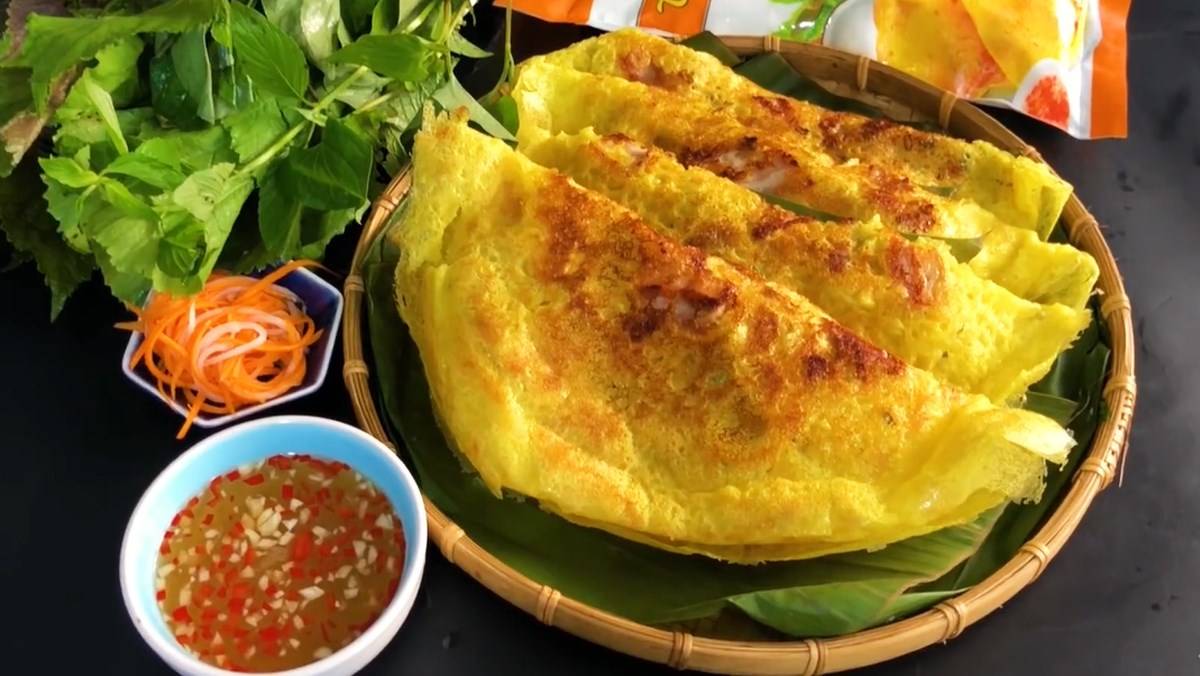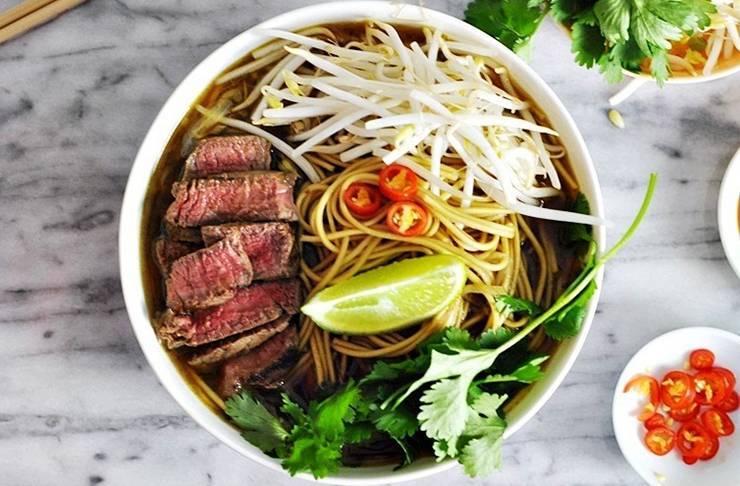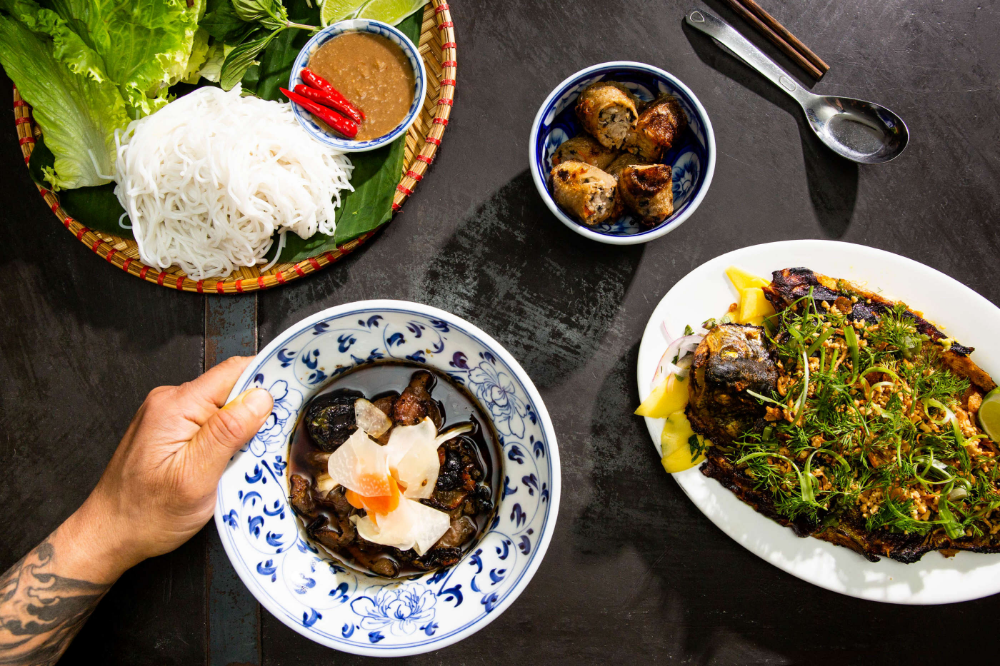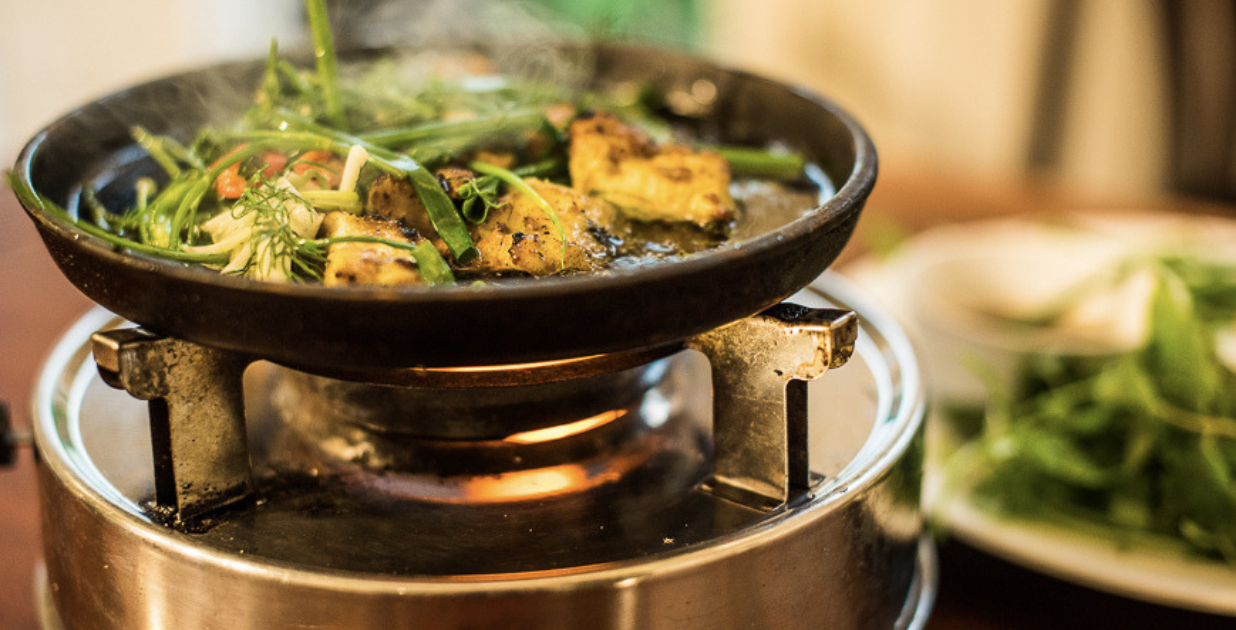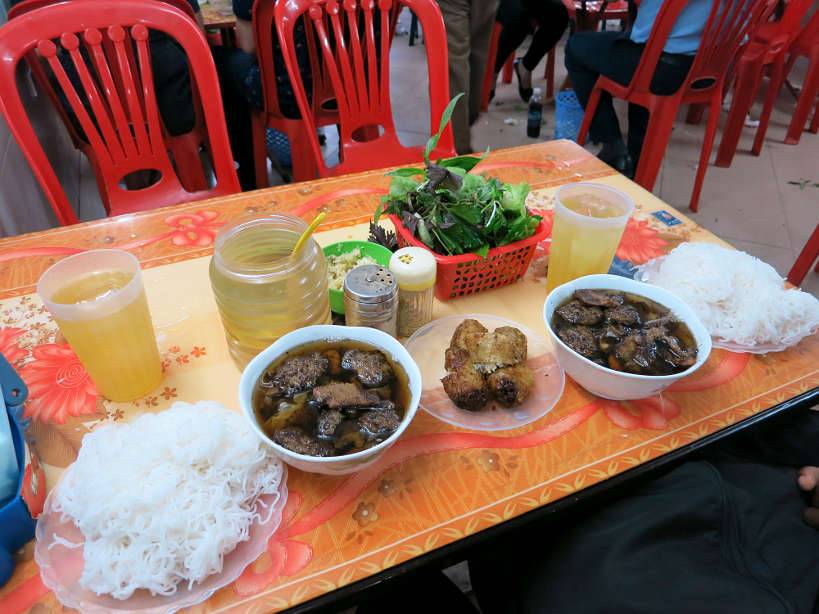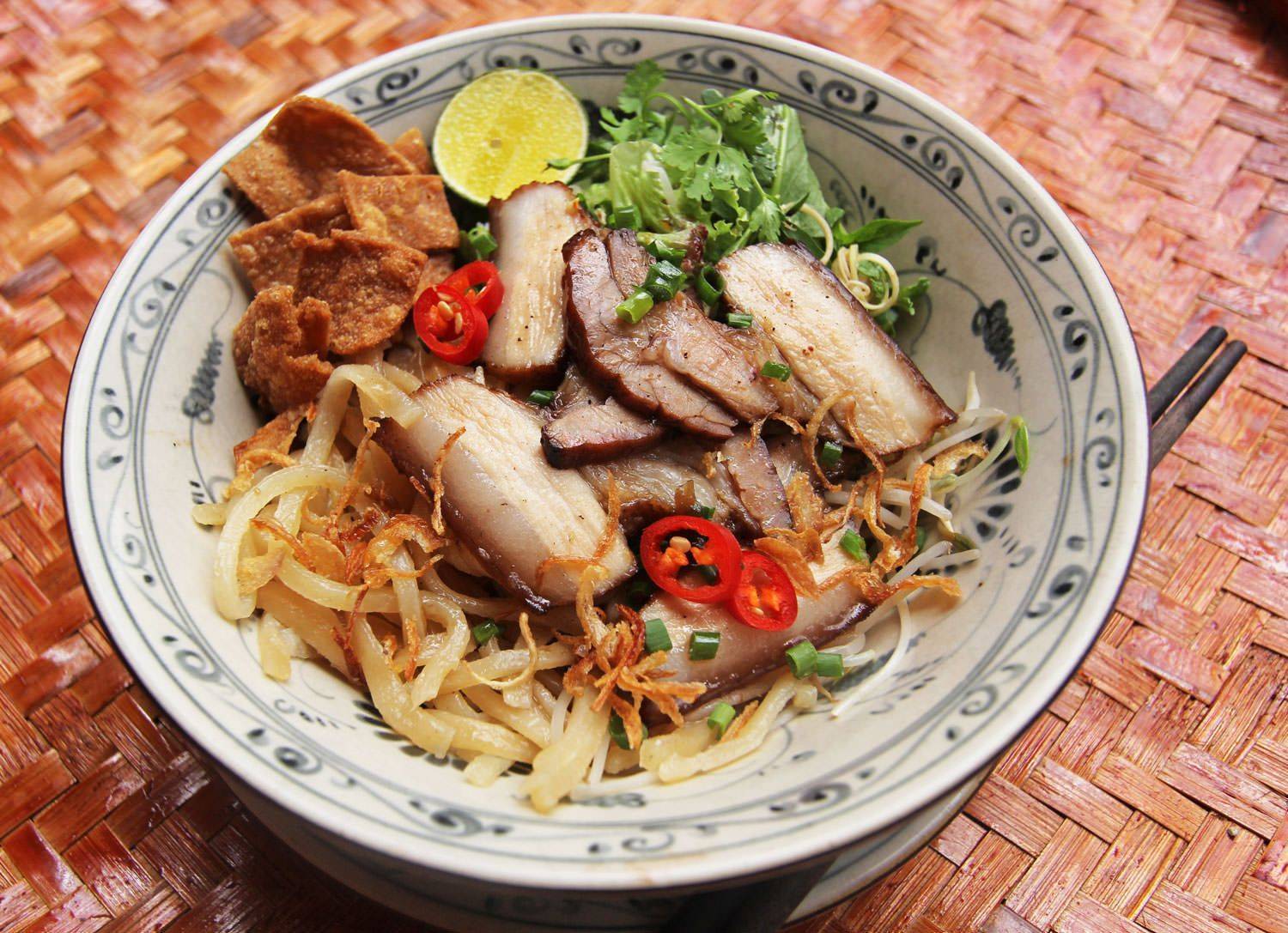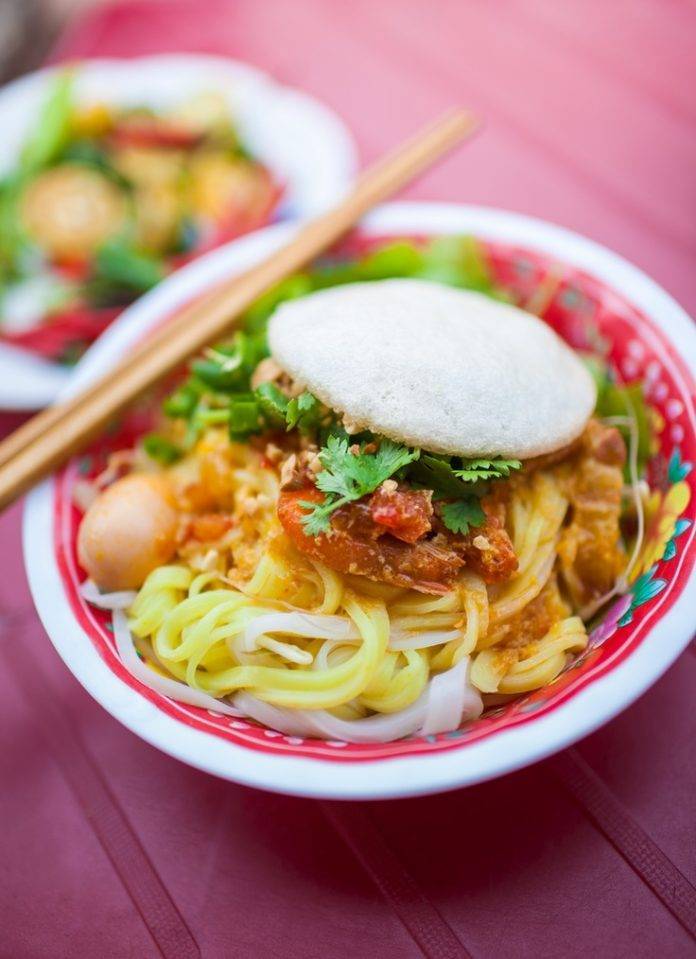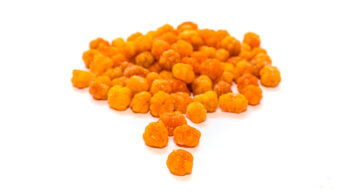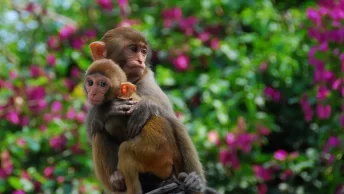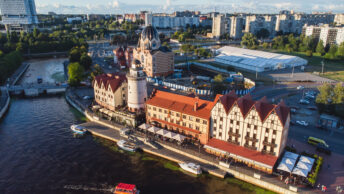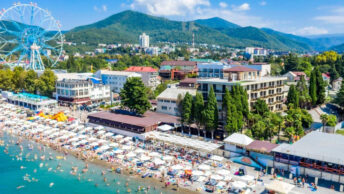Barbecue Rodents Are a Favourite with Drinks
Much as with insects, the presence of mice and other rodents on a menu is a clear indication of some of the hardships that Vietnam has been through in the past. While they might not be your first choice for an accompaniment with your drink, they have nevertheless found a great deal of favor among the local population. A large amount of Vietnamese cuisine and eating out is focused on bia hois, outdoor bars that serve beer made on the day, for consumption within a matter of hours.
Most of these places serve a range of snacks as well, anything from a handful of small barbecue pieces to entire banquets and hotpots. If you look hard enough in HCM City, you can find a few serving barbecued rodents. Vietnamese barbecue is without compare in the world and is one of the real highlights of the national cuisine. They treat rats and mice in much the same way they treat other food. First marinating them using ingredients such as fish sauce, chilies, and lime juice, then cooking over coals for a fantastic side dish to enjoy with a beer.
Foody – guide to restaurants and cafes in Vietnam:
You arrive in Vietnam, for example you are going to Hanoi or Ho Chi Minh City. You want to go out for dinner, lunch or coffee. But how to make sense of those hundreds and thousands of restaurants that you will see in the streets. But where to find quality restaurants and cafes in Vietnam? How’s the food looks and how much it costs? Maybe it will help a great vietnamese mobile application – Foody (available also in English). This application will show you almost all restaurants, cafes and bistros on the map. And not only that. But shops and some tourist attractions but also some places for recreation. Preliminarily, you can also look on the web Foody.vn.
– application is for Android, iOS and Windows Phone
– localized to English (the names of dishes and promotions are in Vietnamese)
– allows the delivery to the address (depending on the price of the order), or restaurant reservations
– in the selection are other restaurants with a specific cuisine (European, Korean, Italian …)
– restaurant reviews, visitors and thousands of photos of dishes bistros, cafes … growing daily
– more information about Foody
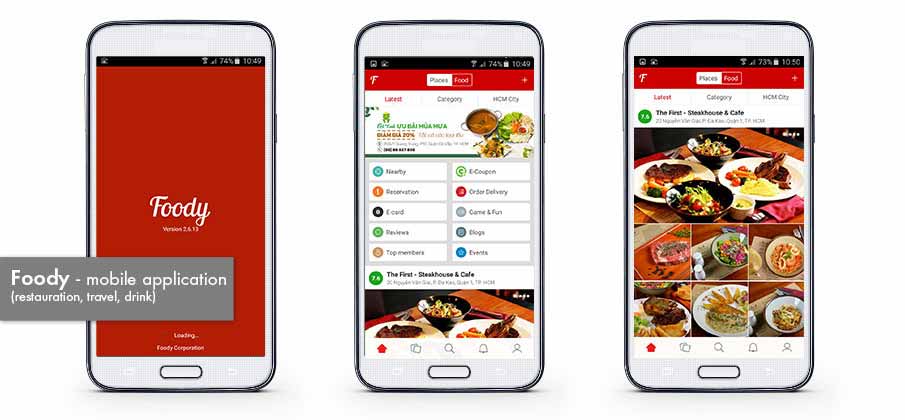 Foody application is very clear, fast to use. Thousands of beautiful photos of various dishes and restaurants.
Foody application is very clear, fast to use. Thousands of beautiful photos of various dishes and restaurants.
A few recommendations in Vietnam:
> Wash purchased fruits, vegetables and herbs and buy only bottled water!
> When you have indigestion, try using probiotics!
> It is not recommended to drink tap water!
> Do not eat smelly food!
>> 30 best Vietnamese restaurants and bistros in Prague + Map <<
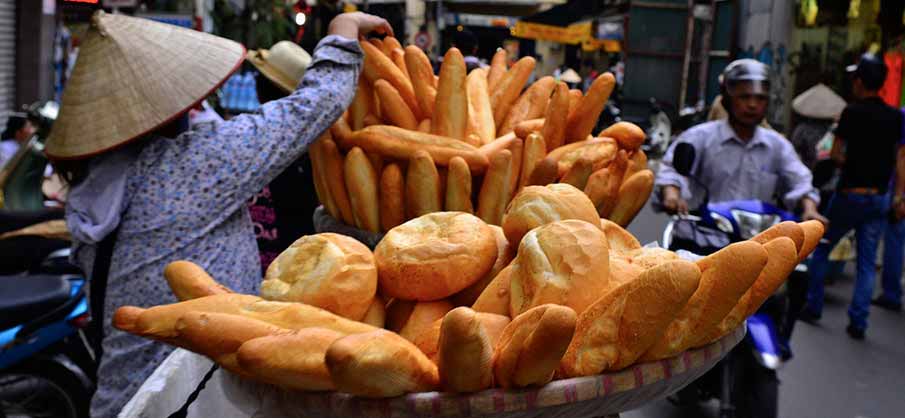 In the streets of Vietnam.
In the streets of Vietnam.
Accommodation|Airbnb|Transport|Markets|Homestay|Money|Weather|Trekking|Sapa|Da Nang|Ninh Binh|Vientiane|Hoi An|Dien Bien Phu|Hue
Bánh cam – fried sesame balls
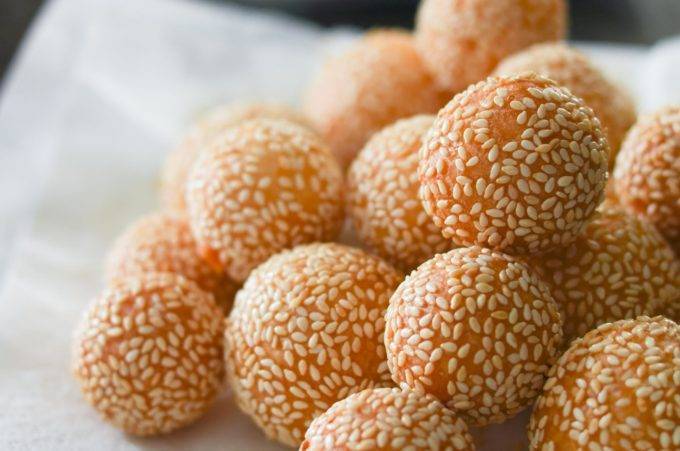
Bánh cam are crispy little treats you can find at dessert shops, selling for about 2-4 for $1 depending on if you get the small or larger sizes. These are deep-fried, crispy rice flour-based balls, covered in sesame with a chewy and crispy texture.
Inside you have a sweet and soft mung bean filling that goes with the outer shell’s texture perfectly. These lil guys are super addicting to eat, and a great dessert to prepare for a family gathering.
You haven’t had proper bánh cam unless you’ve had them fresh, either from the shop or if you make the bánh cam at home. They are ok reheated or a few hours old, but they have a certain magic that doesn’t last too long out of the fryer!
Pho
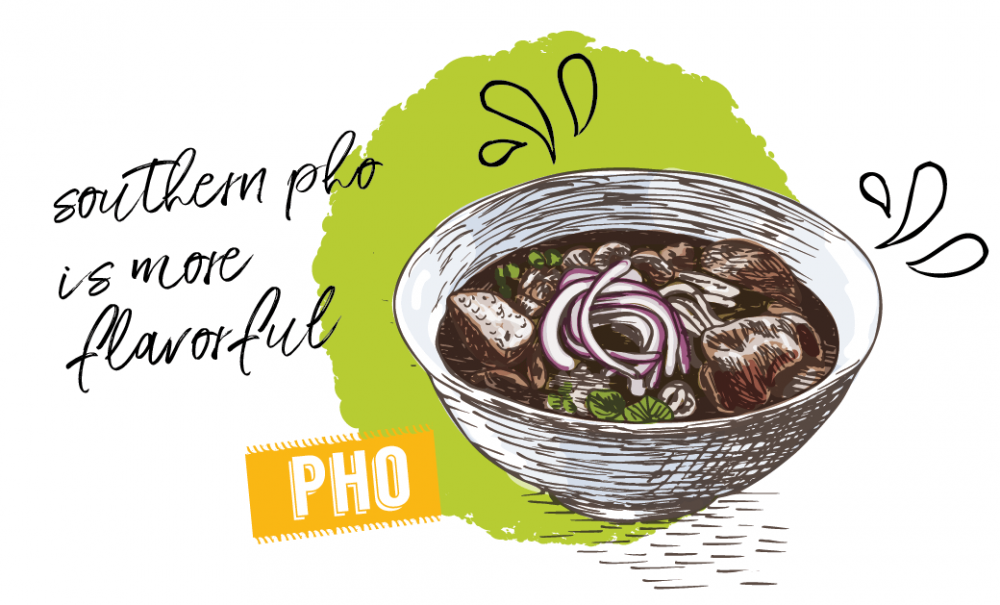
Phở is the quintessential Vietnamese dish, the word phở referring to the type of noodle used in the recipe. Flat rice noodles dance around with medium-rare slivers of beef or boiled chicken in a hearty beef stock. The more popular of the two widely known varieties is Phở Hanoi. Originally from the north, it is distinguished by a clear broth and dressed only with a squeeze of lemon and slices of bird’s eye chili. The southern iteration, Phở Nam, has a murkier broth and is served with a bouquet of fresh herbs like bean sprouts, basil and mint. The broth is usually infused with fragrant star anise, clove and cinnamon to lend a natural sweetness to the mix.
Vietnamese cuisine is one of the most popular cuisines of the world.
Vietnamese cuisine is made up largely of vegetables, fruits, herbs, rice and meat, and it is also very healthy. Traditional Vietnamese dishes are varied, distinct and are comparatively low in fat and high in carbohydrates. Now, even well-promoted. However, this must be done with reserve. Lots of fried, but very sweet foods, beverages and meals are not healthy enough.
Catering is an important group event of the day for the Vietnamese. Contrary to our style of eating, you have to get used to munching and burping, which are a sign of satisfaction with the food! Mess and litter around the tables and on the floor in street cafeterias is rife, you just have to put up with it.
Bun Bo Hue
Bun Bo Hue literally translates as beef noodle soup from Hue, a central city in Vietnam that was once the ancient capital and the main base of many Vietnamese flavors. The history of bun bo Hue is relatively unknown, but it is rumored that it was invented hundreds of years ago by people moving from Northern Vietnam to the South.
The broth is the backbone of bun bo Hue, as is typical with many distinct Vietnamese soups like pho. To prepare the broth beef bones must be simmered for hours with lemongrass and seasoned with fermented shrimp sauce. It is this combination that creates the distinct taste of the dish, which is then served with rice vermicelli noodles, thin slices of beef shank, cha, a mix of mint, basil, coriander, and bean sprouts.
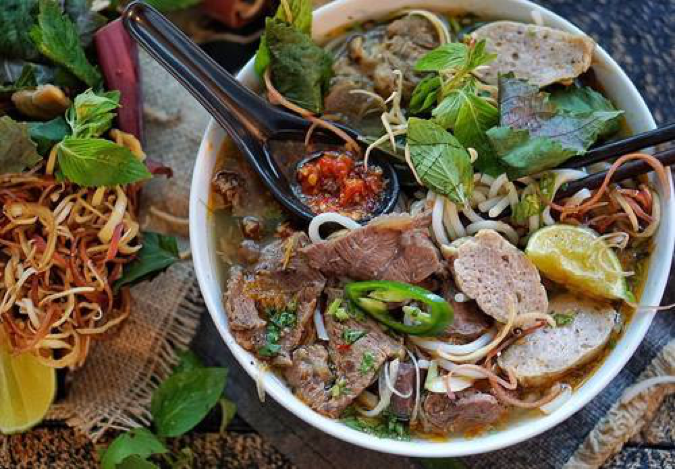 A delight for the eyes and the taste buds, no picture can convey the true deliciousness of bun bo Hue.
A delight for the eyes and the taste buds, no picture can convey the true deliciousness of bun bo Hue.
Though this dish originated in Hue, there are delicious versions of it all over Vietnam, and in our opinion, some of the best bun bo Hue in Ho Chi Minh City can be found. Take a visit to Nhan Tri (295 Le Hong Phong, Ward 2, District 5) which is only 15 minutes away from the center of Saigon, to discover the rich taste and large portions that are adored by locals.
Лекарства и мази
Путеводители и гиды утверждают, что привезти лекарства из Вьетнама нужно обязательно. А мы советуем туристам остерегаться неизвестных баночек со средствами «от всех болезней» и не заходить в лавки к шарлатанам. Не настаиваем, но рекомендуем.
Аптеки во Вьетнаме бывают 2 типов:
- Классические. В них продают медикаменты, сертифицированные лекарства и мази. Этой продукции можно доверять.
- Народные. Сходите в них за колоритными фото с корешками, скляночками и бутылочками. На этом можно остановиться.
Самые популярные вьетнамские лекарства продают на рынках, в сувенирных лавках и в супермаркетах. Последним можно доверять – продукцию в них точно хранят правильно.
Бальзамы
Первое, что нужно привезти из Вьетнама в категории лекарств, – карандаши для ингаляций. Они продаются во флакончиках размером с гигиеническую помаду, стоят меньше 15 тысяч донгов за штуку, «прошибают» заложенный нос на раз-два. Карандаши сделаны на основе бальзама «Звездочка» с добавлением ментола. Купить их можно даже на рынках, это безопасно. Привезите их из Вьетнама для себя или в подарок близким, у которых есть дети.
В стране все так же популярен бальзам «Золотая звезда». Если вы жили в СССР и 90-х, то ни с чем не спутаете его запах. Купить во Вьетнаме «Звездочку» стоит туристам, которые страдают от укачивания. Слегка потрите виски перед поездкой – помогает. Еще в лавках с лекарствами продают недорогие жидкие бальзамы на основе «Звездочки» с ароматизаторами – они тоже хороши для поездок, а еще снимают головную боль и помогают при насморке.
Лечебные мази
Шоппинг во Вьетнаме невозможен без покупки пары коробочек «Тигрового бальзама» или лекарств на основе змеиного яда. В России тоже можно найти «Кобратоксан», но его цена в 5-7 раз выше, чем во Вьетнаме. Например, в 2021 году в городе Нячанг можно купить мазь со змеиным ядом за 20 тысяч донгов (это меньше 60 рублей), а в Москве такой же тюбик продается за 320 рублей.
Какие мази привезти из Вьетнама и для чего:
- «Кобратоксан» – для облегчения болей в суставах, от растяжений, для лечения спины. Отзывы туристов об этом лекарстве всегда восторженные – везите из Вьетнама для себя и в подарок пожилым родственникам, спортсменам, офисным сотрудникам.
- «Красный тигр» – для лечения растяжений, перенапряжения или ушибов мышц, восстановления связок, головных болей, простуд. Этот «Тигровый бальзам» похож на «Звездочку», но отзывы туристов о нем лучше, потому что он более эффективен. Цена мази во Вьетнаме – около 15 тысяч донгов.
- «Белый тигр» – те же свойства, что у красного, но он действует более мягко.
- Hong Linh Cot – мазь со змеиным ядом, камфорой и ментолом. Отзывы туристов просто отличные, поэтому смело покупайте лекарство во Вьетнаме. Используйте для облегчения болей в спине, при артритах и растяжениях.
Вытяжка из артишока
Это не лекарство, а скорее БАД: во Вьетнаме средства на основе артишока продаются в аптеках, на рынках и супермаркетах. На вкус они редко кому-то нравятся, а вот полезные свойства туристы хвалят.
Считается, что вытяжка из артишока помогает снизить уровень холестерина в крови, чистит печень, нормализует обмен веществ. Артишок используется для чистки организма от токсинов и популярен как средство для похудения. Внешне средство напоминает смолу. Также артишок во Вьетнаме можно купить в виде чая. Говорят, его нужно принимать в течение месяца, чтобы почувствовать эффект.
Гриб рейши
Средство для тех, кто ищет во Вьетнаме лекарство от астмы, сухого кашля или для нормализации работы поджелудочной железы. Рейши называют «грибами бессмертия». Их нужно заваривать в термосе, принимать в виде чая. Покупайте средство только в аптеках Вьетнама. На рынках в Нячанге, Хошимине, Фантьете часто продают бесполезные подделки.
Капсулы нони
Очень популярное во Вьетнаме средство. Считается, что БАД имеет высокие антиоксидантные свойства, эффективно борется со свободными радикалами, очищает организм. Капсулы нони делают в Таиланде, но вьетнамцы продают их по хорошей цене. Упаковку из 100 капсул можно купить за 170-200 тысяч донгов. В России аналогичный товар с той же концентрацией вещества стоит в 2-3 раза дороже.
Cà phê – Vietnamese coffee
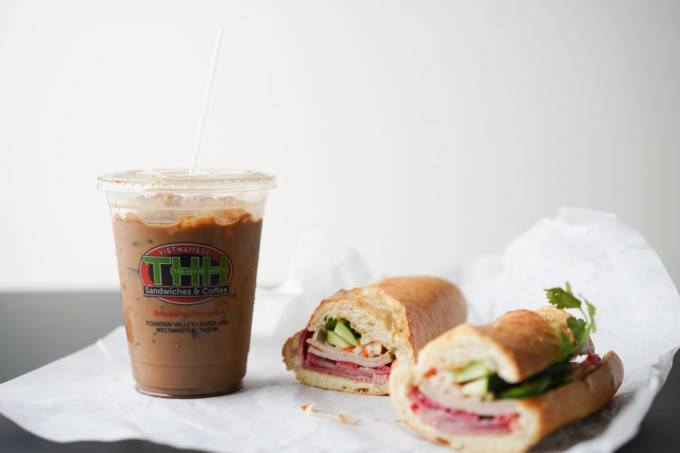
The popularity of Vietnamese coffee is exploding and for good reason. This stuff is very strong and packs a super sweet punch. It’s definitely a treat. At home, Vietnamese coffee is caringly drip-brewed using a dark French roast, 1 cup at a time with a metal filter called a phin (pronounced ‘feen’).
Then a thick and sweet condensed milk is added to suit your taste and mixed to combine. This coffee can be served as is hot, but since it is so strong, it can easily be added to a large glass of crushed ice and enjoyed slowly as the ice melts.
It’s so strong that it replaces my typical twice-daily espresso / latte / cortado routine. Learn how to easily make Vietnamese coffee at home!
4. Bun Ca or Bún Cả – Fish Noodles Soup
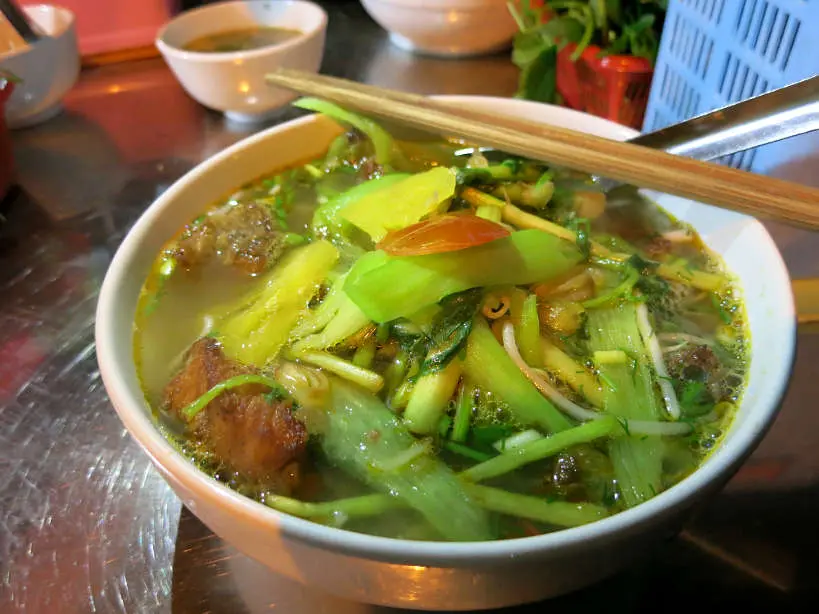
Bún Cá soup, perfect for cool evenings.
Fish soup is a common Vietnamese dish across Vietnam. The type of fish used is based on where you are in Vietnam.
In Northern Vietnam, freshwater fish is widely used in dishes. This Hanoi food, bun ca, is no exception.
It is a light broth made from fish bones with golden fresh white fish lightly fried. At the bottom of the soup you will find a bed of rice vermicelli.
Snakehead fish is typically used in Hanoi for this fresh fish noodle soup.
On the top covering the broth, is a delicate combination of spring onions and bean sprouts mixed with dill herbs.
This fish soup is very fragrant and heartwarming, a hanoi food to savor on the street.
RELATED: Read Hoi An Food Guide and Hoi An Street Food
The flavours of Hue food
Com hen (mussel rice)
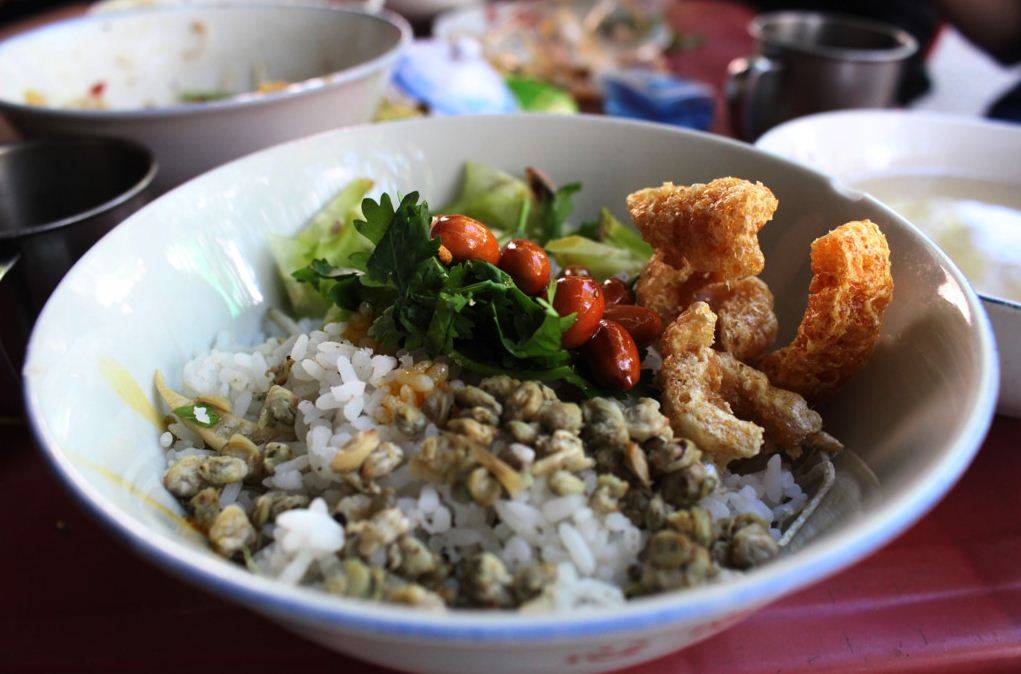 Com hen (mussel rice) in Hue, one of the most popular Vietnam traditional food
Com hen (mussel rice) in Hue, one of the most popular Vietnam traditional food
There are a variety of the dishes in the Central, both fussy dishes and rustic ones. One of the most favorite dishes in the Central is mussel rice. It is so popular that everyone in the Central likes it. It is easy to cook mussel rice, including rice and boiled mussel. The mussels are thoroughly soaked in water and boiled until mussel shells open. Boiled soup and mussels are the main components of rice mussels. This dish is served with herbs, sour star fruit, fish sauce, pepper, greaves, fried pork skin and peanuts, especially spicy chilly. Spicy flavor along with vegetables in mussel rice is a perfect combination of yin and yang. Mussel soup should be served in a separate small bowl. Do not miss a chance to enjoy Hue mussel rice.
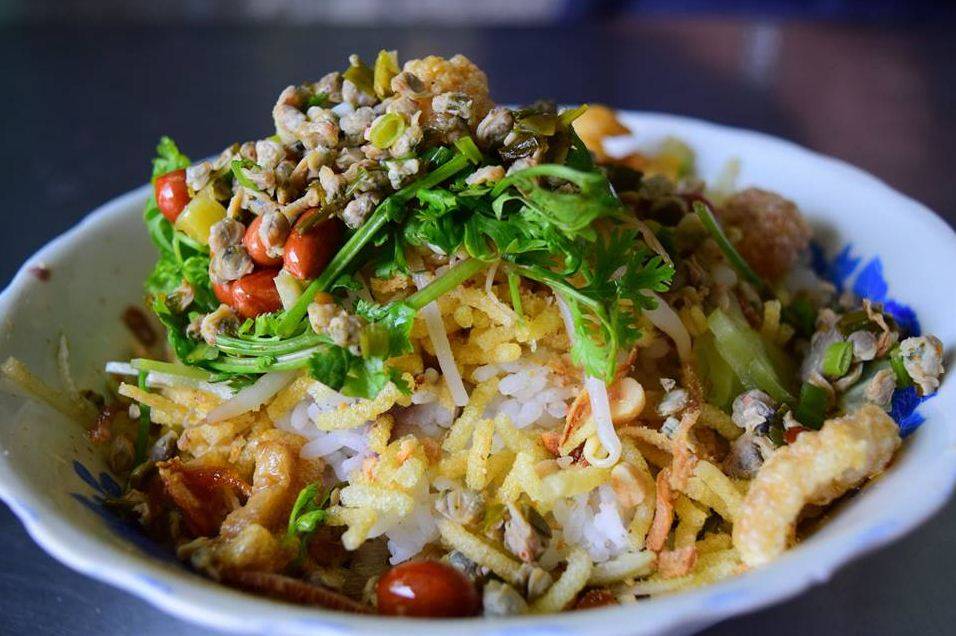
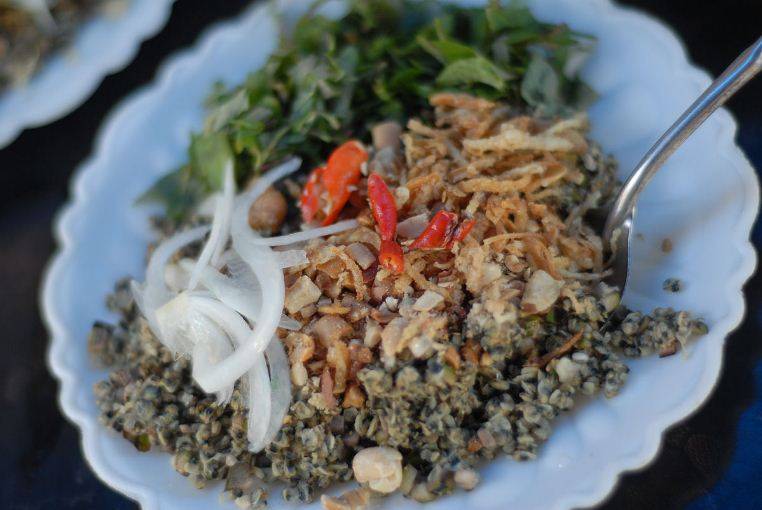 Com hen (mussel rice) in Hue, one of the most popular Vietnam traditional food
Com hen (mussel rice) in Hue, one of the most popular Vietnam traditional food
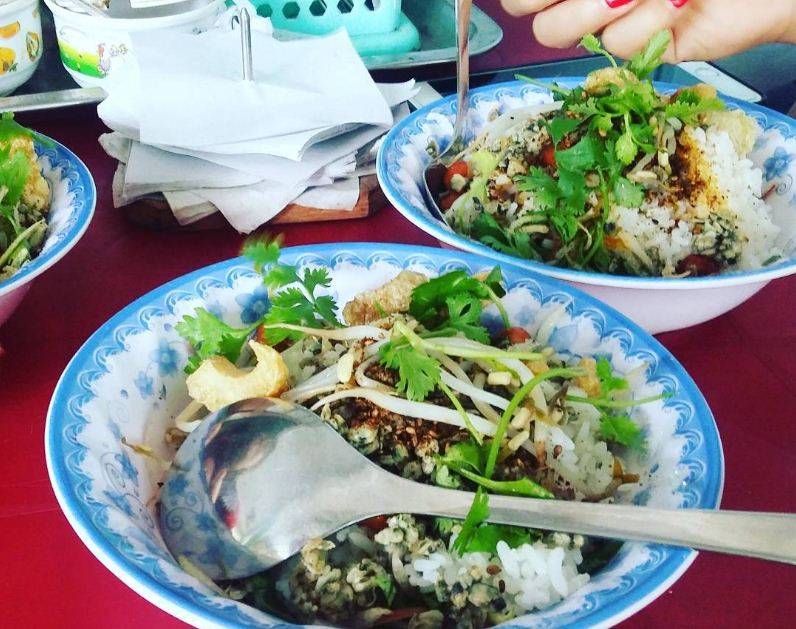
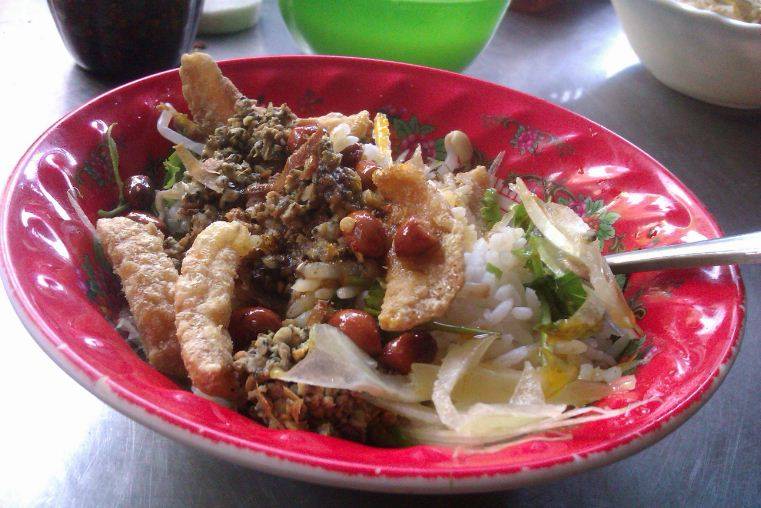 Com hen (mussel rice) in Hue, one of the most popular Vietnam traditional food
Com hen (mussel rice) in Hue, one of the most popular Vietnam traditional food
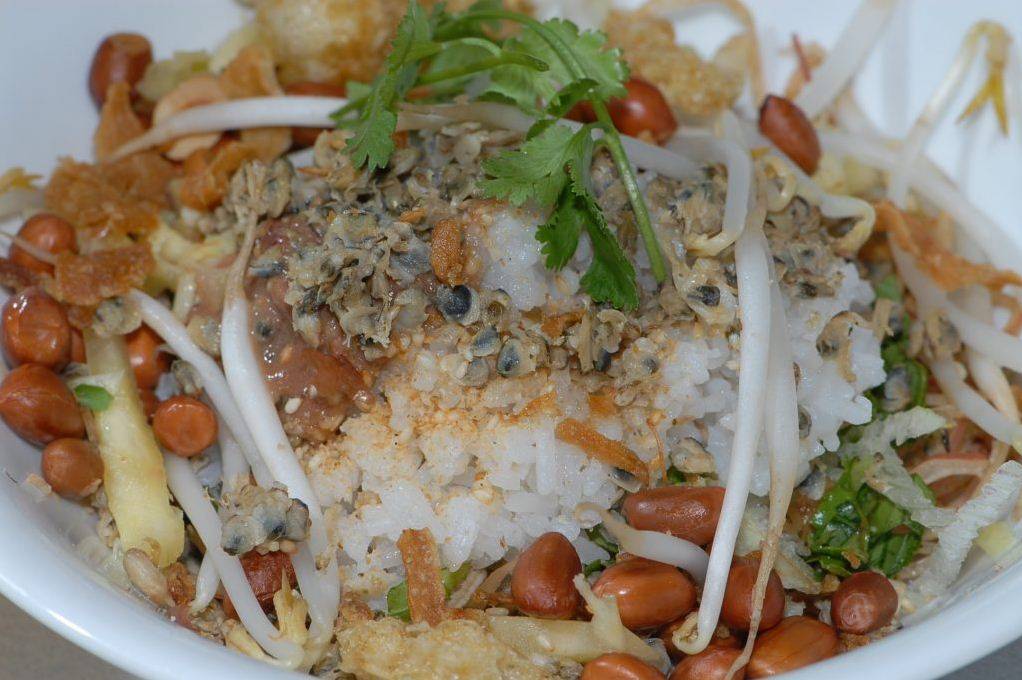
Banh uot (wet cake)
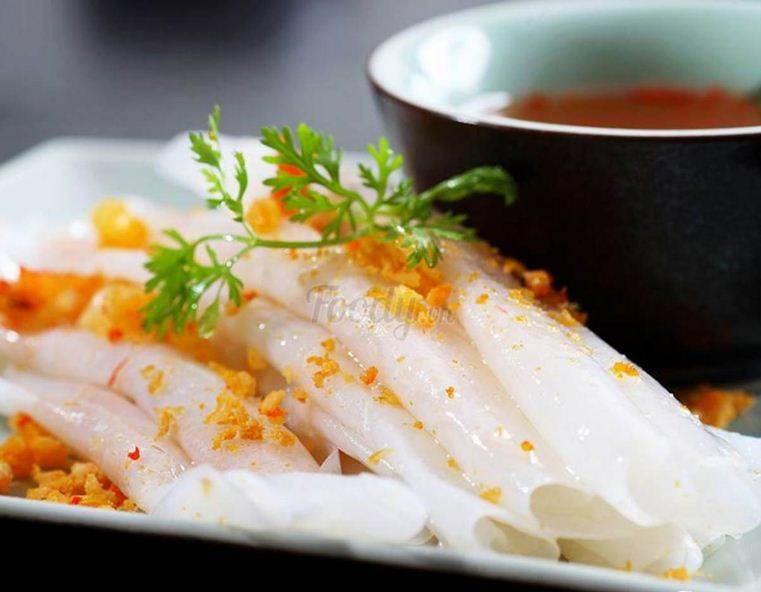 Banh uot tom chay, one of the vietnam traditional food
Banh uot tom chay, one of the vietnam traditional food
In Hue and in the Central Vietnam, wet cake is made from prawns is also very popular. The wet cake must be thin and a little tough so that the diners can feel tender flavor. It is particularly smooth, thin yet untorn. Without colorings, the natural colour of shrimp is kept intact. This dish is served with fish sauce of lemon and garlic. Salty flavor should be stronger than sweet flavor. Fish sauce will add flavor to the cake, whereas if sauce is too salty or too acidic, it can damage the taste of cake. It takes about half an hour to have wet cake. Shrimp is put in the middle, and then rolled up. The white of the cake and the pink of shrimp looks so attractive that diners want to have it at once. No need to eat in a hurry, just leisurely pick up one by one, slightly put it in fish sauce. Absolutely, you can taste sweetness in your tongue.
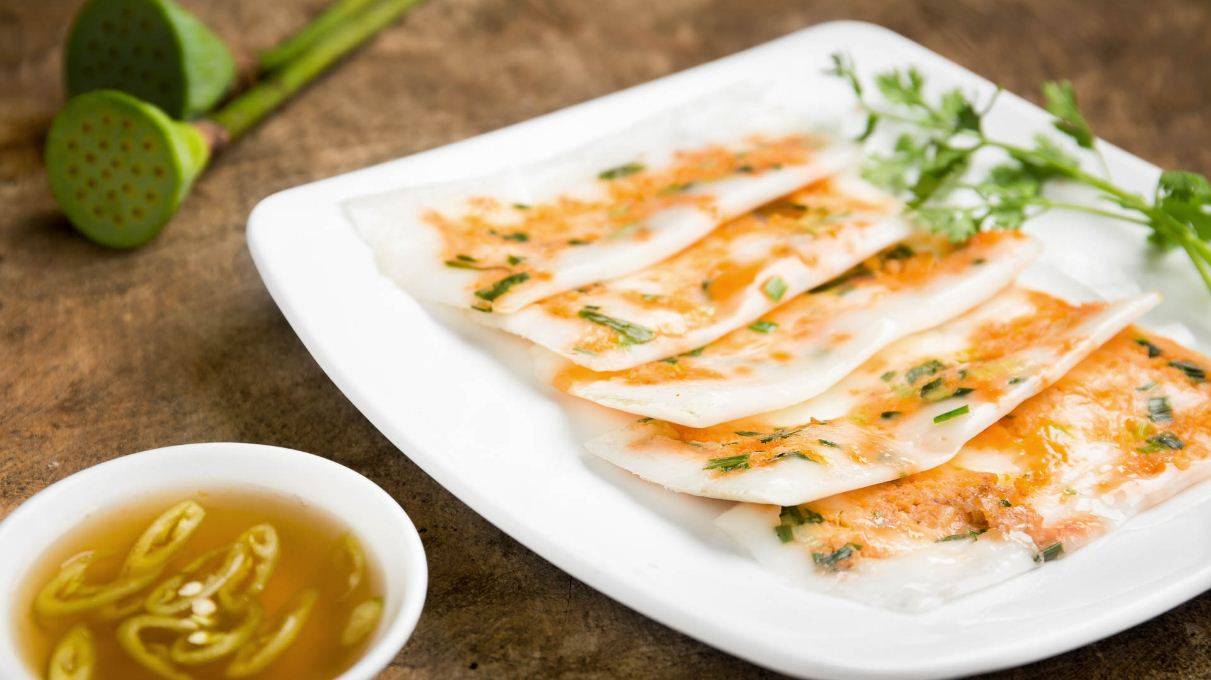 Banh uot tom chay, one of the vietnam traditional food
Banh uot tom chay, one of the vietnam traditional food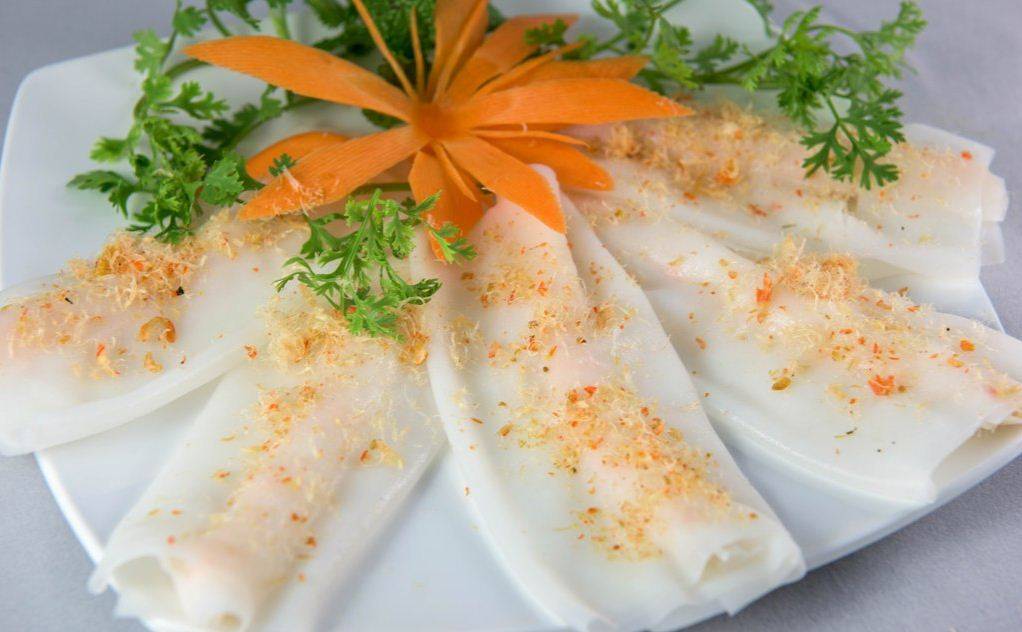 Banh uot tom chay, one of the vietnam traditional food
Banh uot tom chay, one of the vietnam traditional food
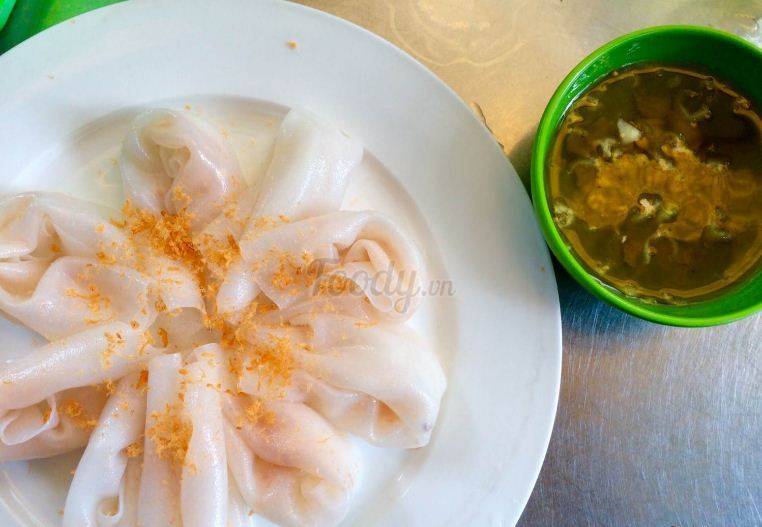 Banh uot tom chay, one of the vietnam traditional food
Banh uot tom chay, one of the vietnam traditional food
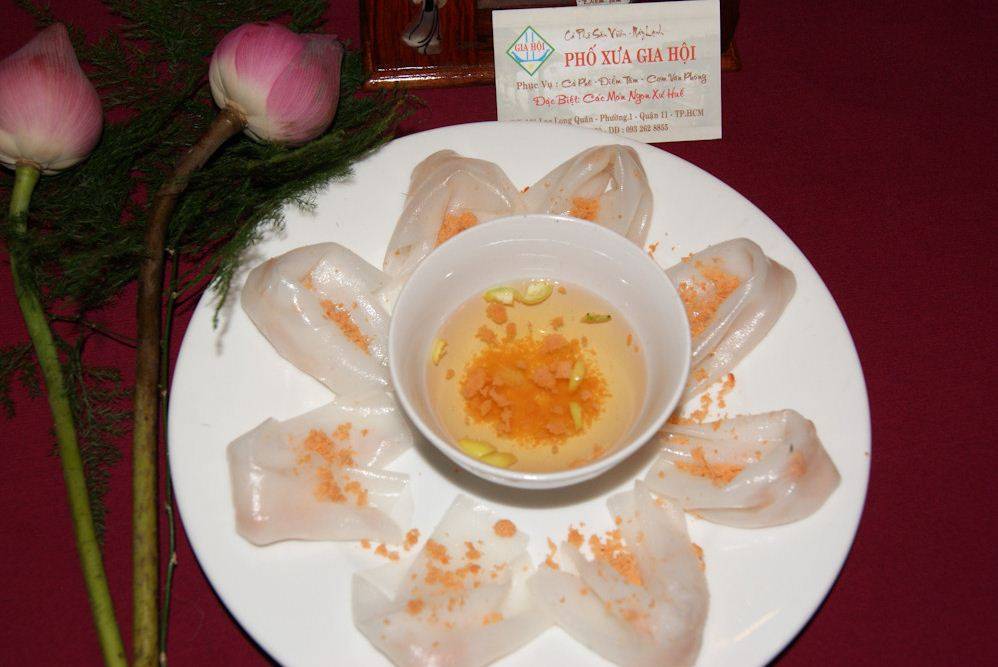
Chả Cá
You’re in for a treat. This is one of Hanoi’s famous specialty foods that has garnered international acclaim in the last 5-10 years. The main ingredient is fresh snakehead fish that is very delicate and doesn’t taste fishy at all.
It’s then combined with turmeric, dill, peanuts, rice noodle, and scallions, along with chilies, fish sauce, and additional herbs to top it all off.
This is another restaurant that only offers one thing made to perfection. Pairs nicely with white wine or beer. The medley of flavors and textures make this quite possibly the best fish dish we’ve ever tasted anywhere!
Try it here: Chả Cá Thăng Long 19 – 21 – 31 Duong Thanh, Hà Nội,Vietnam (Old Quarter) 120k VND per person
Phở Cuốn
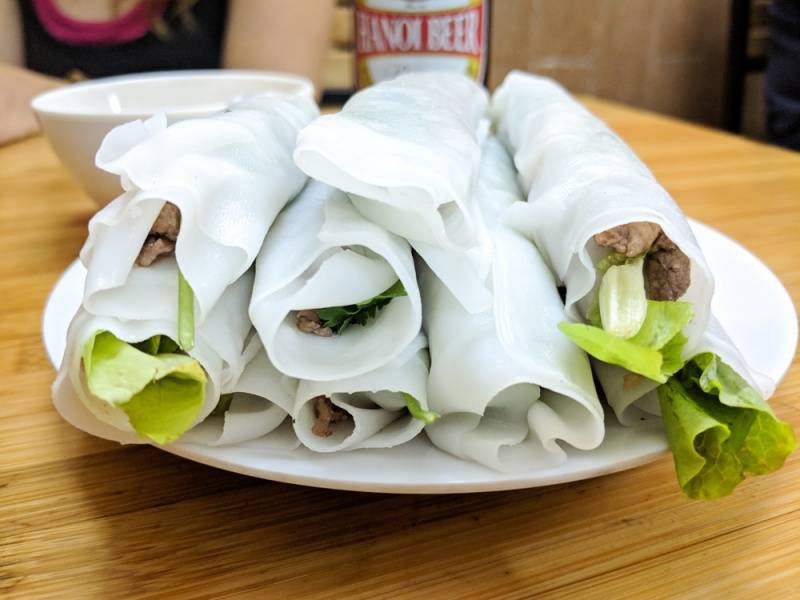
Phở Cuốn at Phở Cuốn Hương Mai in Hanoi
The Phở Cuốn is basically all the ingredients of Pho, but without the broth. It consists of strips of grilled beef and lots of herbs like cilantro, basil, and mint, all rolled up in a wide rice noodle. So instead of using a spoon and chopsticks, you just dip them in a bowl of nước chấm (sweet fish sauce) and enjoy!
Where to eat Phở Cuốn in Hanoi
There is actually a whole neighborhood in Hanoi dedicated to Pho Cuon. The Trúc Bạch neighborhood of Hanoi, to the east of West Lake, is full of restaurants serving up Pho Cuon and its sister dish Phở Chiên Phồng (more on that dish later).
Phở Cuốn Hưng Bền (Address: 35 Nguyễn Khắc Hiếu) is a popular option, as is Phở Cuốn Hương Mai (Address: 27 Ngũ Xã). You really can’t go wrong with any of the restaurants at this intersection. Just go to the one that is most popular with the locals!
Egg Coffee
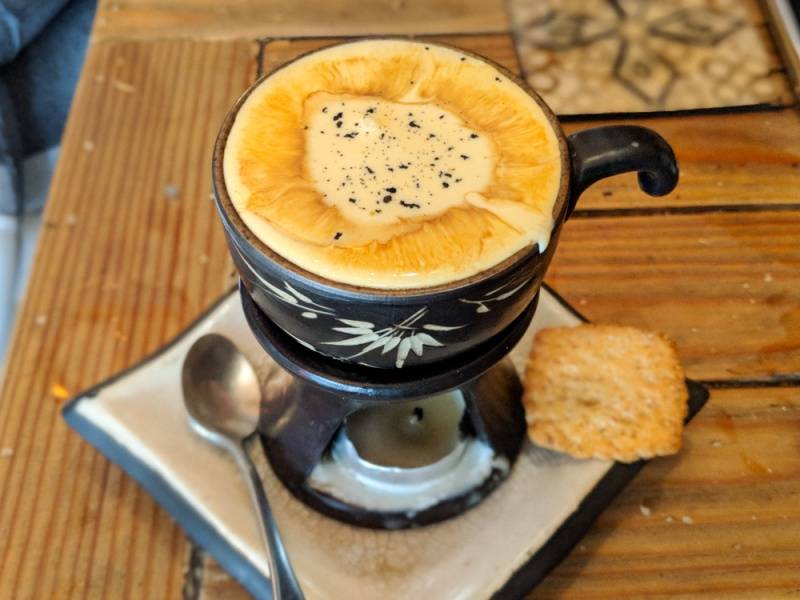
Egg coffee (called Cà Phê Trứng in Vietnamese) was first invented by Nguyen Giang in 1946. There was a shortage of milk in Hanoi due to the French War. Mr. Giang got creative and began adding whisked eggs to his coffee instead.
The original version was a bit, well, eggy. But over time the recipe evolved with the addition of sugar, condensed milk, and even Laughing Cow cheese (no one knows for sure, it’s a secret recipe). These days Egg Coffee is a staple of Hanoi coffee culture and a must-try while in Hanoi!
What does it taste like? Well, it’s incredibly thick and rich and creamy. Closer to a dessert than a beverage. Liquid tiramisu is the most accurate description we’ve heard.
Nguyen Giang still has a cafe where you can try his famous recipe. Or, you can grab a cup of Egg Coffee at dozens of coffee shops all over Hanoi. And if you’re heading to Southern Vietnam, there is also a burgeoning egg coffee scene in Saigon!
Giang Cafe (Address: 39 Nguyễn Hữu Huân)
Owned by the inventor himself, Mr. Nguyen Giang. Giang Cafe is hidden down an alleyway on Nguyễn Hữu Huân street. And if you’re only going to drink one cup of Egg Coffee in Hanoi, you should do it here. It comes out resting in a bowl of hot water to keep the decadent mixture warm while you sip.
If you’re not a coffee fan, then opt for the egg beer! We tried it but neither of us could make it through the whole glass. It’s incredibly filling and a very strange flavor combination.
Cafe Đinh (Address: 13 Đinh Tiên Hoàng)
Cafe Dinh is not the original Egg Coffee shop but many people think it’s the best. It’s hidden between the Old Quarter and Hoa Kim Lake, down an alleyway, and up a flight of stairs. If you’re lucky enough to get a seat on the balcony, you can enjoy your cup of Egg Coffee while watching the madness of the street below.
Banh Mi (Vietnamese Baguette)
Banh mi is a French-Vietnamese fusion sandwich filled with a type of grilled or non-grilled meat. Grilled belly pork is a classic. This Viet dish will also have slices of cucumber, pickled carrots, daikon, spring onions, coriander, and sauced with sriracha sauce and mayonnaise.
What I really like about banh mi is that it’s got a bit of everything. The grilled meat is salty, the pickles add a sweet and tangy taste, the cucumbers and herbs cut through the meat, and the airy crusty baguette has a lovely crunch to it.
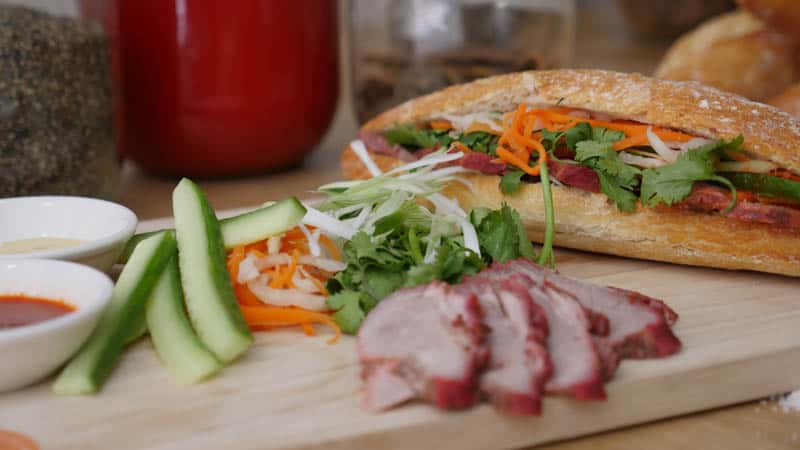
If you want to add a bit of heat and creaminess to the banh mi, then the sriracha sauce and garlic mayo will provide that. Don’t skip on the chicken liver pate if you’re offered, the pate will complete your banh mi experience, trust me.
Like the pho, there are many different kinds of banh mi you can choose (as your protein). For example, grilled belly pork, cold cut pork, grill lemongrass chicken, char siu, pork meatballs, fried tofu, etc. Basically, anything you get your hands on you can turn it into a banh mi. As long as you have the pickled carrots and daikon, cucumber, coriander, and sauces. With these counterparts together, you’re good to go!
Specialities of the west (Mekong Delta)
Bun Bi (Skin vermicelli)
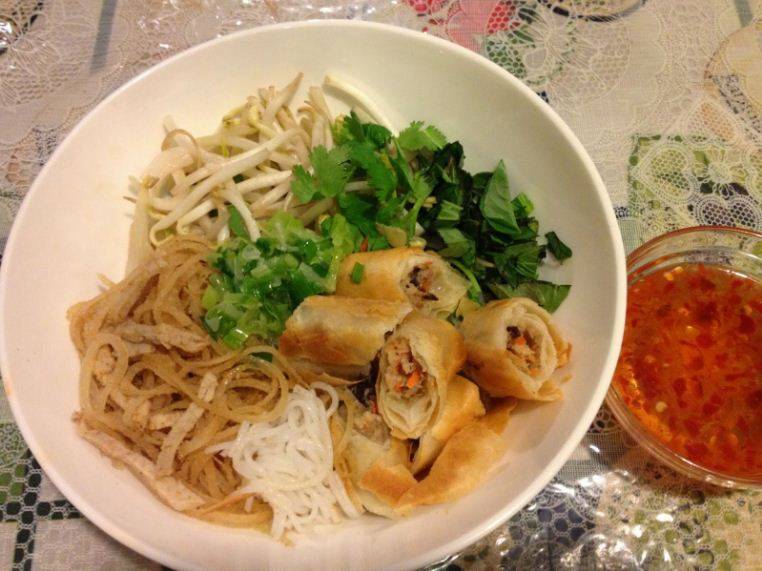 Bun bi, one of Vietnam traditional food
Bun bi, one of Vietnam traditional food
Once visiting the West (Mekong Delta), diners can not miss tasting the traditional dishes of wetland areas like dry foods, water foods, steamed dishes, especially Bun Bi (Skin vermicelli). The slender threads of noodles are mixed with other ingredients. Pork for making skin is carefully selected from lean thighs, then marinated spicy and finally dried. Boiled pork skin is also part of Bi. Then people mix them with Thin (made from pork), roasted rice, making Bun more delicious. One important part of dried dishes is sauce; Bun Bi is not an exception. Its fish sauce has a sweet taste in the tongue but salty when having Bun with other ingredients. It is often served with fresh bean sprouts, sour turnips and carrots, herbs, chopped cucumber, roasted peanuts and chopped fresh chill over a noodle bowl. These home-grown vegetables are very easy to get, yet they contribute to a unique noodle dish than ever. Thus, people often have it for a light breakfast or a snack when the stomach is gnawing.
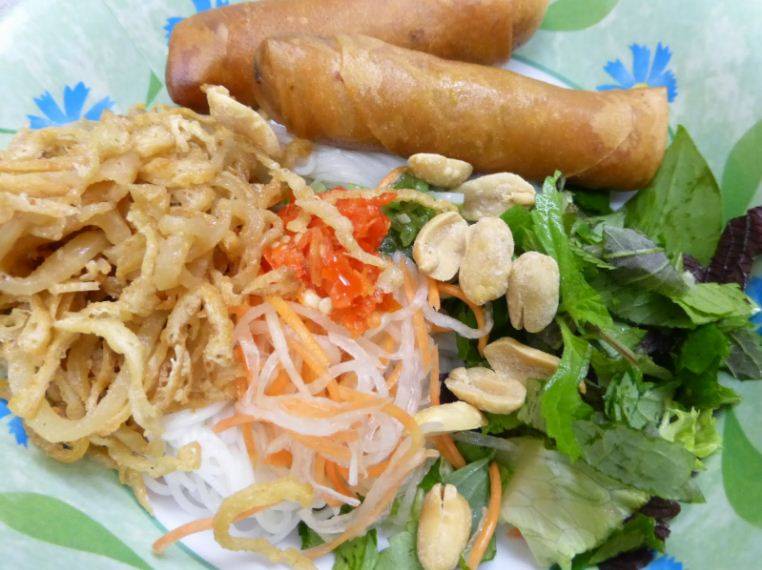 Bun bi, one of Vietnam traditional food
Bun bi, one of Vietnam traditional food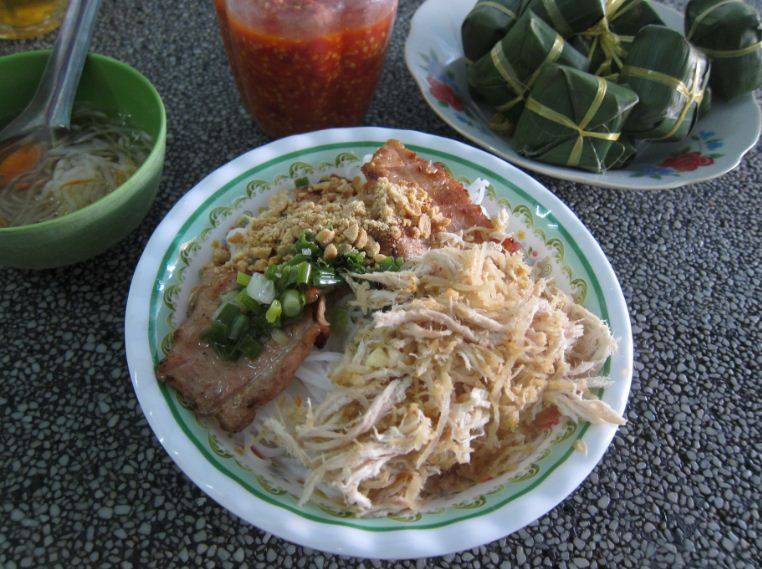 Bun bi, one of Vietnam traditional food
Bun bi, one of Vietnam traditional food
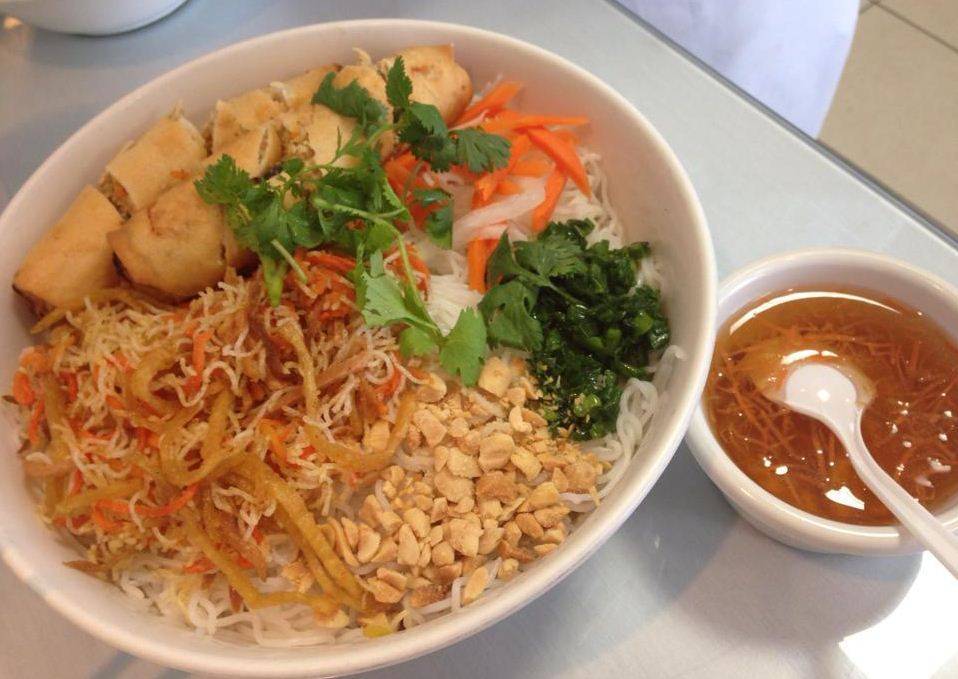 Bun bi, one of Vietnam traditional food
Bun bi, one of Vietnam traditional food
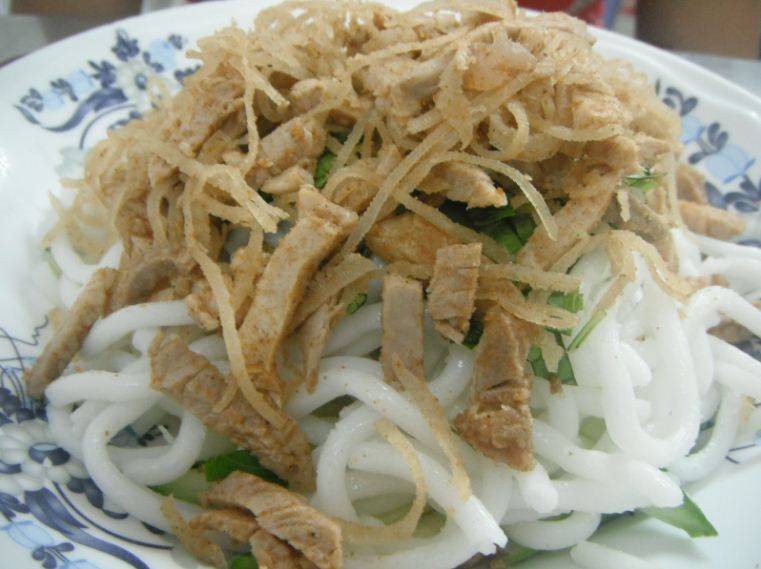
Ca loc kho to (braised snakehead fish)
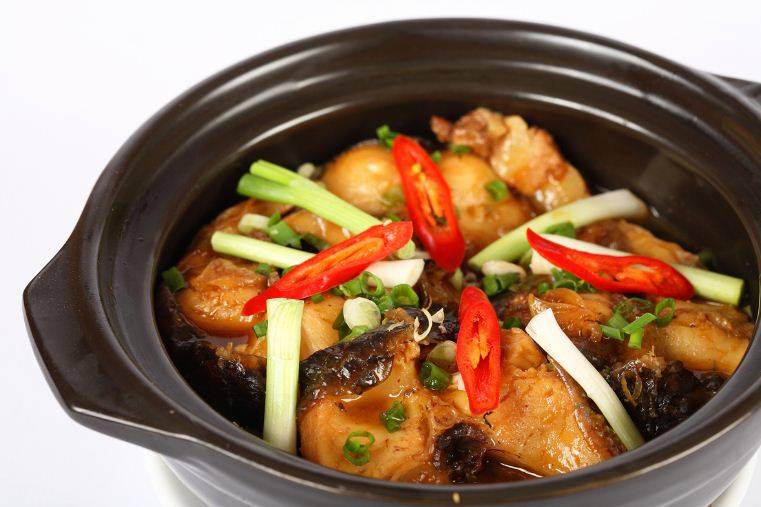 Ca loc kho to, one of the Vietnam traditional food
Ca loc kho to, one of the Vietnam traditional food
The second dish is braised snakehead fish. Fish is the specialty of the West, thus the West people utilize both delicious and nutritious fish. Snakehead fish is cleaned, sliced then marinated with fish sauce, sugar, and pepper. Do not forget coconut milk and colored sauce. Thanks to coconut milk, the dish gets a perfect yellow. Several slices of bacon bring both fat flavor and sweet taste of fish. Fish is just delicious when cooked in a clay or porcelain pot. It is the material of the pot that creates tasty braised fish. Adding some slices of red chilly and green onion to the pot makes the fish more eye-catching. Apart from rice, braised snakehead fish is served with porridge. Slowly enjoy slices of fish with fat flavor of meat, spicy flavor of chili and fragrant spices!
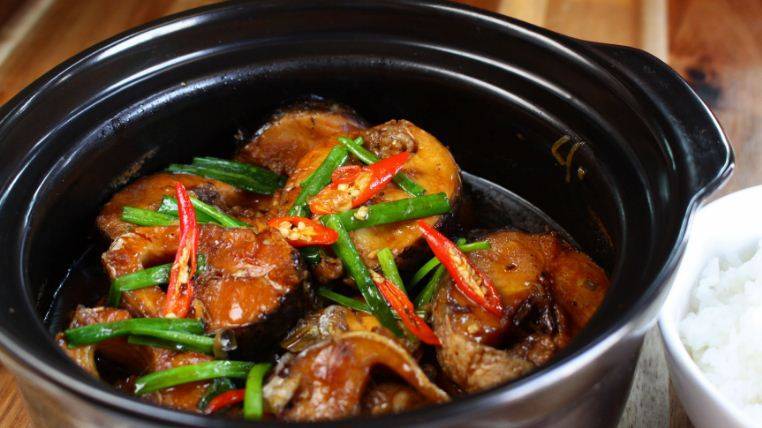
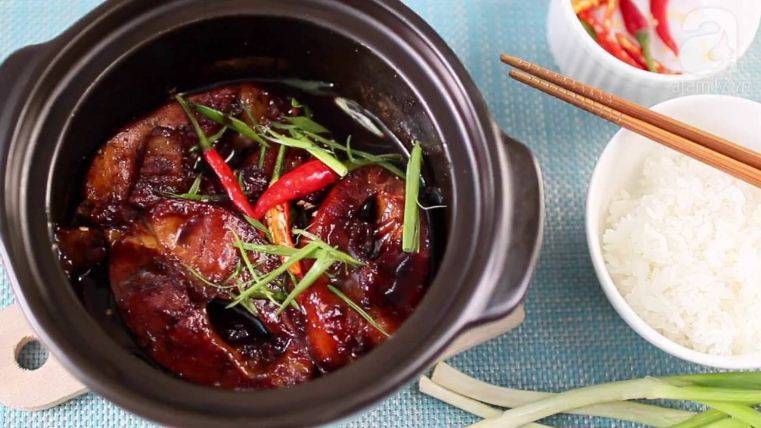 Ca loc kho to, one of the Vietnam traditional food
Ca loc kho to, one of the Vietnam traditional food
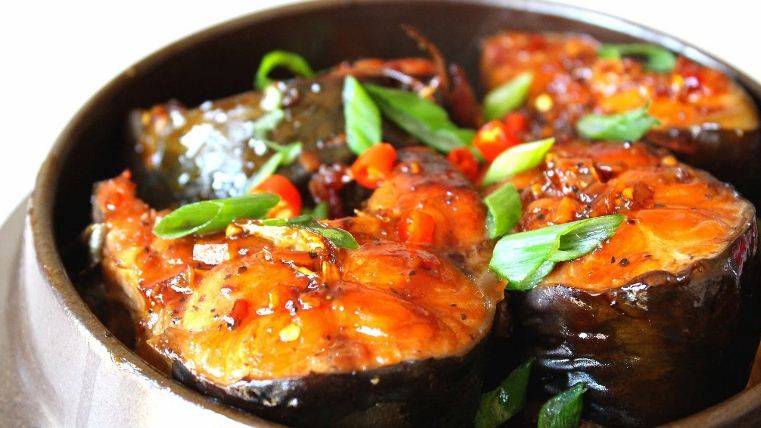
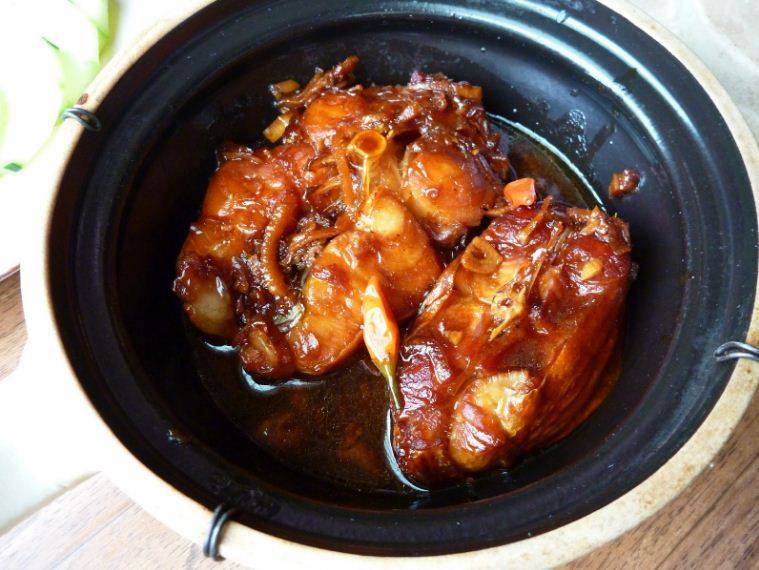
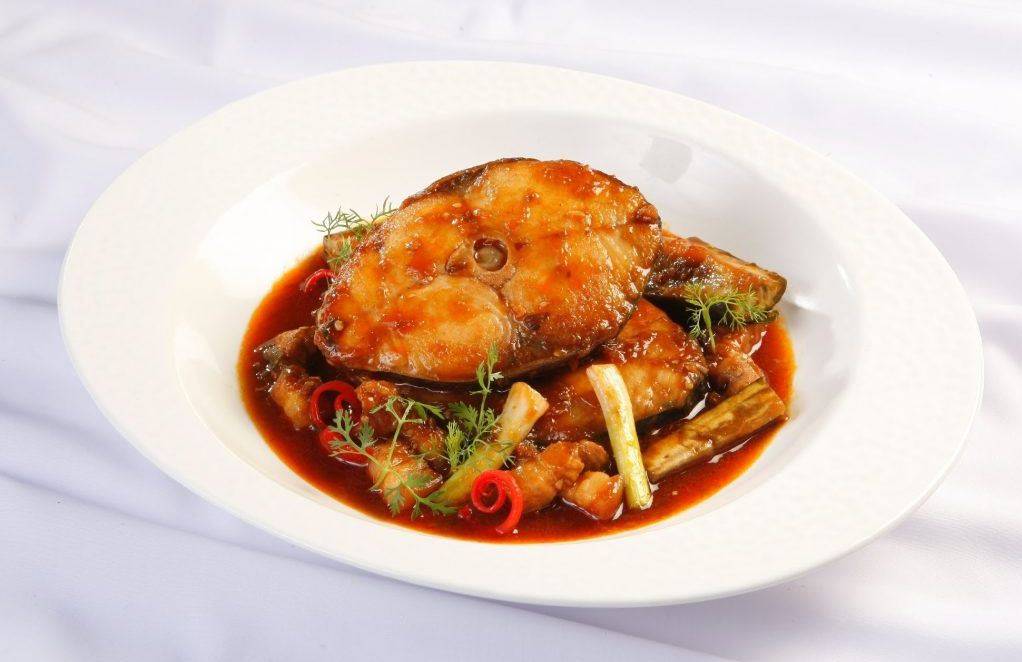 Ca loc kho to, one of the Vietnam traditional food
Ca loc kho to, one of the Vietnam traditional food
Rambutan
This fruit is usually grown in a bundle, with the rambutan’sexterior color varying from yellowy orange to yellow or red. This fruit is native to the region’s tropical countries, with the spines located on the outside of the rambutan popularly called “messy hair”.
The fruit’s flesh sometimes sticks into the seed a bit, but this is not always the case. The fruit is thick, white and comes with a fragrance that is good, while its taste is a bit sour. Additionally, rambutan ripening season typically starts from June and is ready for harvest by August. A rambutan is definitely one of the tropical fruits available in Vietnam that should be tried.
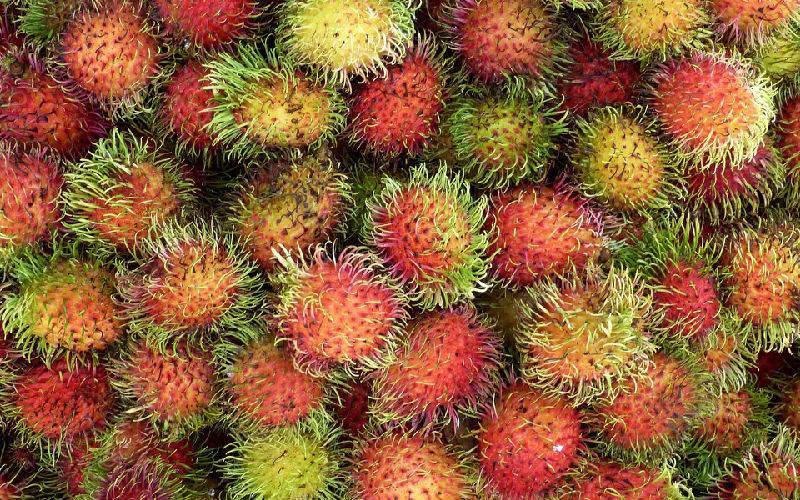
Phở
Noodle soup
OK, it’s time to get serious. One of the 2 most famous dishes to come out of Vietnam, is the mighty bowl of Phở! Perhaps the most controversial too, as it is widely argued that this is one of those French-influenced dishes mentioned earlier.
Whilst it’s no argument the noodles are true of Chinese origin, the soup or broth part is more arguable. Could it be a true fusion of East meets West? Chinese noodles, French Soup, and Vietnamese herbs and spices? It is said the word Phở comes from the French ‘pot-au-feu’ which means ‘pot in the fire’ and is made much in the same way as its Vietnamese counterpart. ‘Phở’ pronounced correctly also sounds like the French word ‘feu’.
The soup base is a light broth, made by simmering beef bones and vegetables, and spices for hours, before being strained and used as a starting point to which the other ingredients are added. For tips on where to find the best Phở, check out our post on Vietnamese Street Food.
How long do they cook the broth?
It’s hard to say, some say 10 hours is enough, whilst some restaurants are known to keep it simmering indefinitely; adding new bones daily and simply skimming the top of the soup and removing old bones.
The other main component is rice noodles, which can be found just beneath the surface. Normally it comes with some form of beef and plenty of vegetables and chopped scallions. On the side, as with Bún bò Huế, a mountain of vegetation, chilis, lime wedges, and chili sauce are served. There are so many variations of this dish and oh so many restaurants and vendors, everyone has their personal favorites.
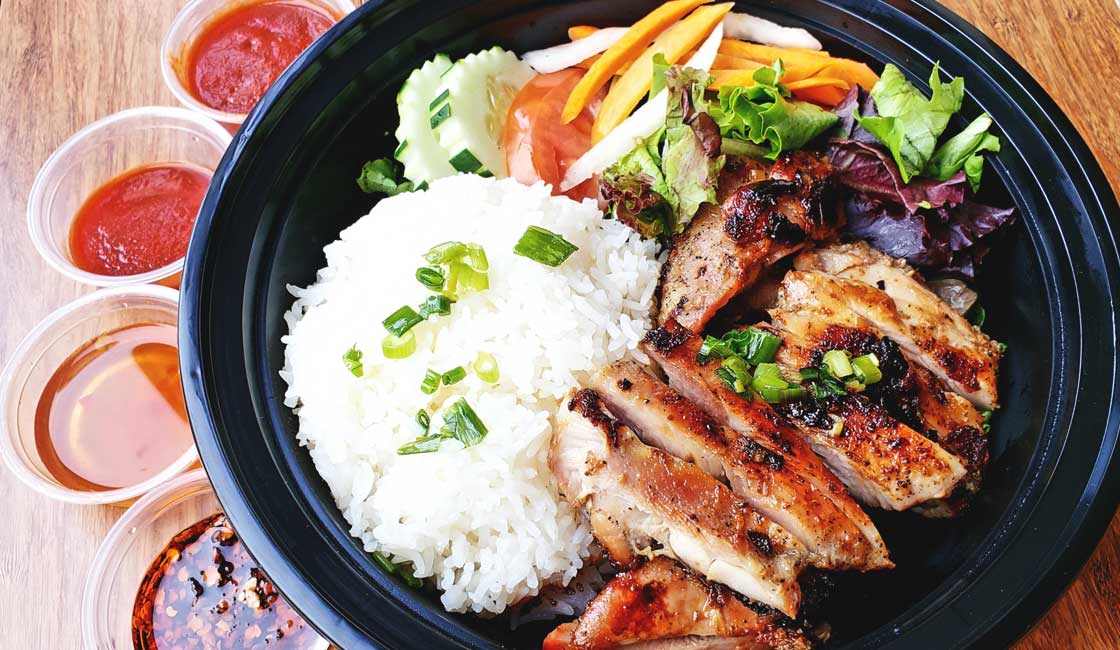
Somehow they make it delicious
Bánh Cuốn – Rolled Cake
Bánh Cuốn was our first street food in Vietnam and boy was it delicious. The Vietnamese are so clever with their creations of special food in Vietnam. Bánh Cuốn is made from steamed rice sheets, rolled with minced pork, mushroom, and shrimp filling.
This delicately wrapped food in Vietnam is served with dried onion and dipped in fish/chilli sauce. It’s easy, quick, cheap and delicious street food in Vietnam, that only sets you back 15,000 VND per plate. All over the country, you’ll find variations of this dish, like Bánh Cuốn Chả which is equally as delicious!
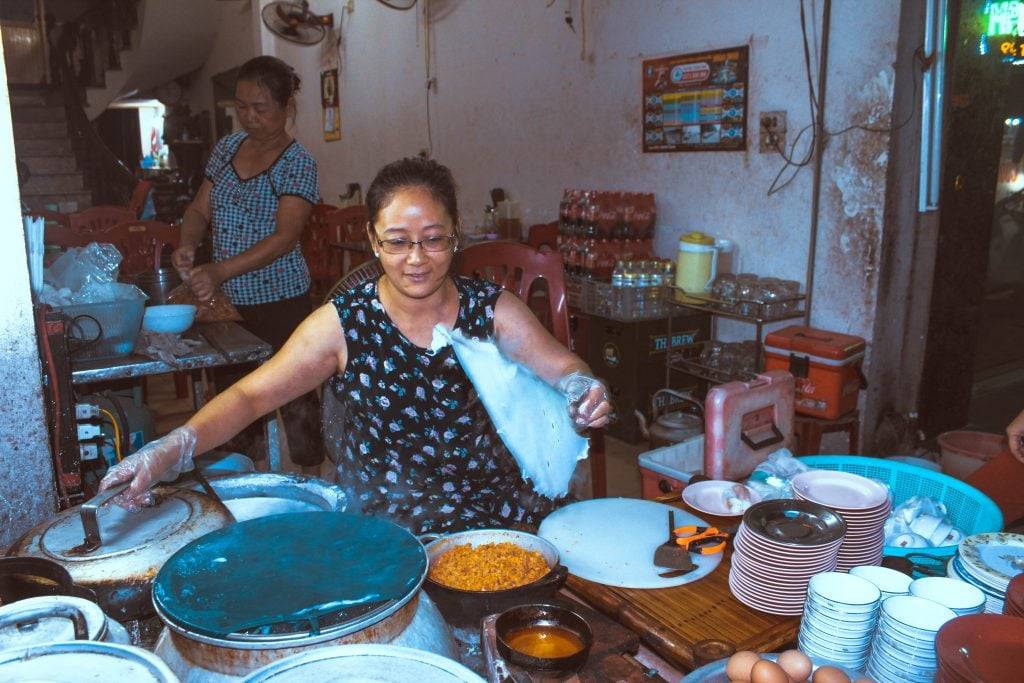 This happy lady makes the best banh cuon!
This happy lady makes the best banh cuon!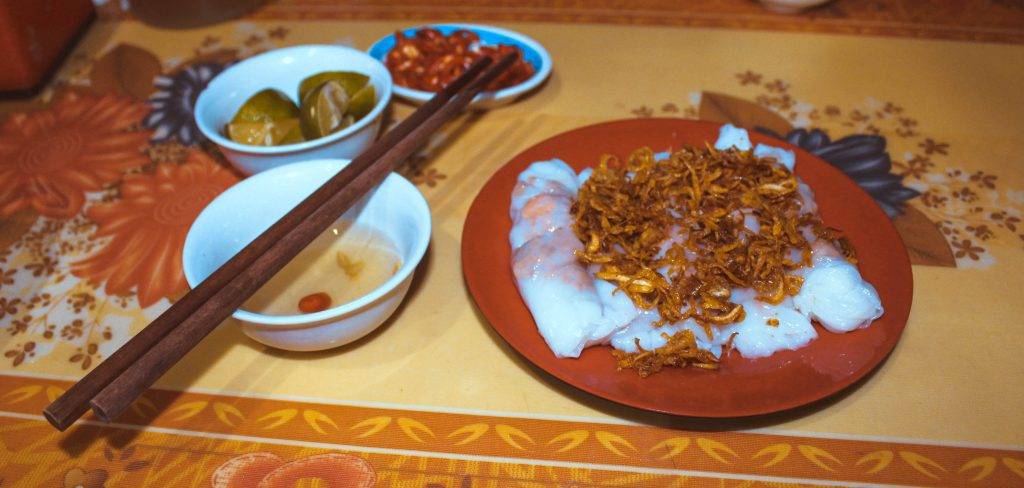 All this for only 15,000 VND! Its the cheapest food in Vietnam
All this for only 15,000 VND! Its the cheapest food in Vietnam
3 Bun Cha Hanoi
Bun Cha Hanoi, also known as bun cha, is a cold noodle soup. As its name would suggest, this food originated in the Vietnamese city of Hanoi, but it has become popular all over Vietnam. Like many other Vietnamese dishes, Bun Cha Hanoi is made with rice noodles and is typically served with pork.
RELATED: Top 10 Street Foods To Try From Around The World
The broth is made with a mixture of vinegar, fish sauce, and sugar. This gives it a really unique flavor that blends the sweet, savory, and slightly tangy. The dish is served with the broth at room temperature, with the noodles, fresh herbs, and grilled pork nestled inside. To enjoy, just mix them all together and dig in!
Top 6 Fun Facts About Vietnamese Food
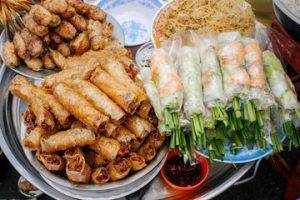
1. Regional differences
The Vietnamese cuisine is mainly divided into three parts geographically that is North, Central, and the South. A fun fact about the regional variation is that all three territories offer different kind of food being in the same area. The North consists of food that is hotter than other regions, and soup in this region plays a significant role. Meanwhile, the South has a collection of spicy food which is undoubtedly a delight to try. The Central part offers a combination of small dishes which is very distinct and fun to utilize.
2. Made by fresh ingredients
The most fantastic fact about Vietnamese cuisine is that the ingredients used in the preparation of the food are organic. Everything used in the process is healthy, and that is an excellent benefit for diet conscious people. Instead of eating fatty food, it seems more ideal to consume salubrious tasty food. The herbs are a good source of nutrition which is refreshing and gratifying.
3. They eat close to the floor
One of the most fantastic things about Vietnam is that the people are considerably down to earth and that is directly reflected in their style of eating. Even if you visit the fanciest hotels there, they are set up such that they serve the food in containers which are close to the floor. They mostly don’t have chairs in the restaurants but tend to make use of small stools. There is no specific reason why this trend is followed; however, it’s just embedded deeply in their culture.
4. Trying out coffee in Vietnam
This is for all the hardcore coffee lovers out there if you are going to visit Vietnam, there are some particular types of coffee that you must try like egg coffee also known as ‘ca phe trung.’ You can also get decently hot coffee and ice coffee which comprises of water or milk. The North is especially famous for coffee so if you are visiting Vietnam only for this purpose, then doesn’t forget to go to the North.
5. Vietnamese beer is quite affordable
In most countries, the price of beer is high, well that is the distinction between other country and Vietnam. When it comes to beer options, there are tons of brands that are available in this beautiful country like Beer Saigon, Bia Hanoi. Moreover, the quantity in which the beer is served is also right, so you can pay little and get more. The legal age of drinking in Vietnam is 20 years, and without attaining this age, you won’t be able to get any liquor.
6. Cake designed in various shapes
The specialty of cakes in this region is that they are created in enjoyable ways which are surely going to entertain the person from whom it is made. Moreover, the taste of cakes here are just outstanding so overall you get an excellent presentation of food with a delightful flavor. The cost of this dish is not too much so anyone with an adequate amount of money can easily purchase it.
Bun Cha
Bun Cha hit the international radar when President Barack Obama and Anthony Bourdain rolled up their sleeves to dip rice vermicelli noodles (bún) into little bowls filled with a grilled combination of ground and whole pork drenched in Nước Chấm – a sweet yet savory sauce made with ingredients like fish sauce, sugar and vinegar. They both loved the experience and who can blame them – eating Bun Cha is fun.
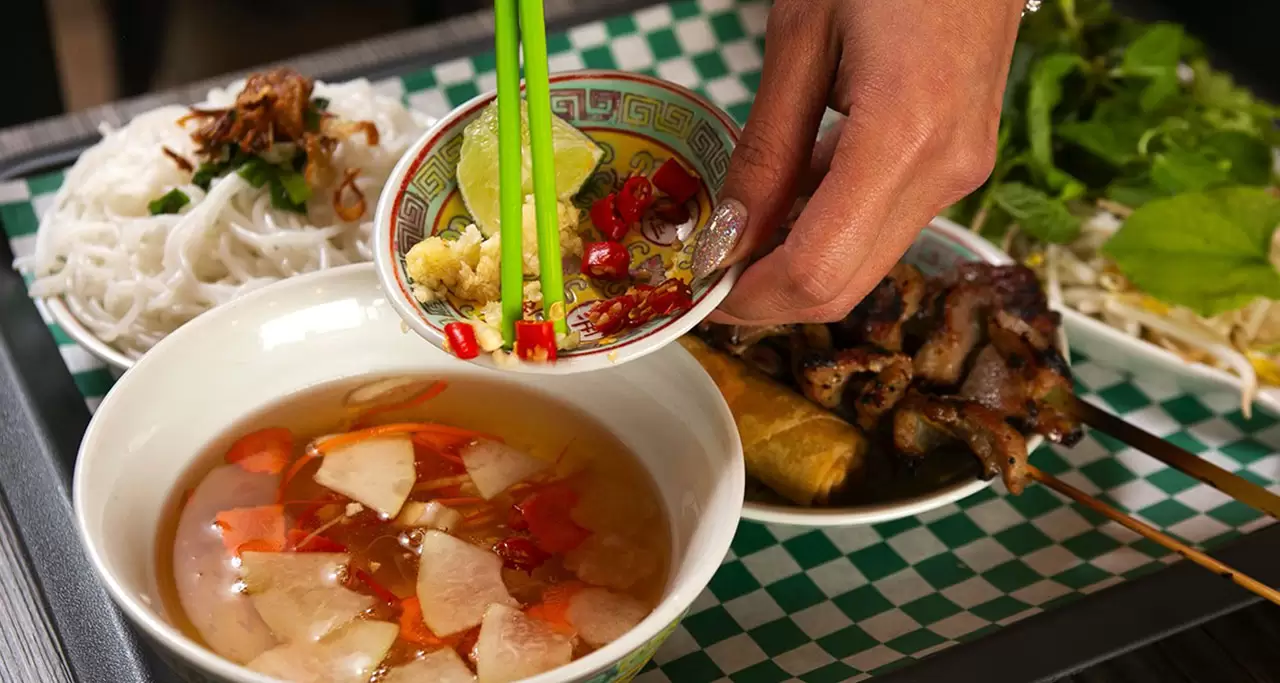
Bun cha is originated and remains very popular in Hanoi. In some regions of Vietnam, a similar dish called bún thịt nướng is alternately served. Bun cha contains main ingredients of meat (minced pork shoulder or pork belly), rice vermicelli, dipping sauce (diluted fish sauce with sugar, lemon juice, vinegar, stock, crushed garlic, chili), pickled vegetables (green papaya, carrots, onion), fresh herbs, etc.
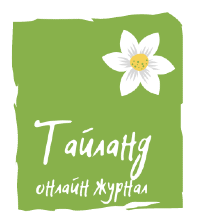

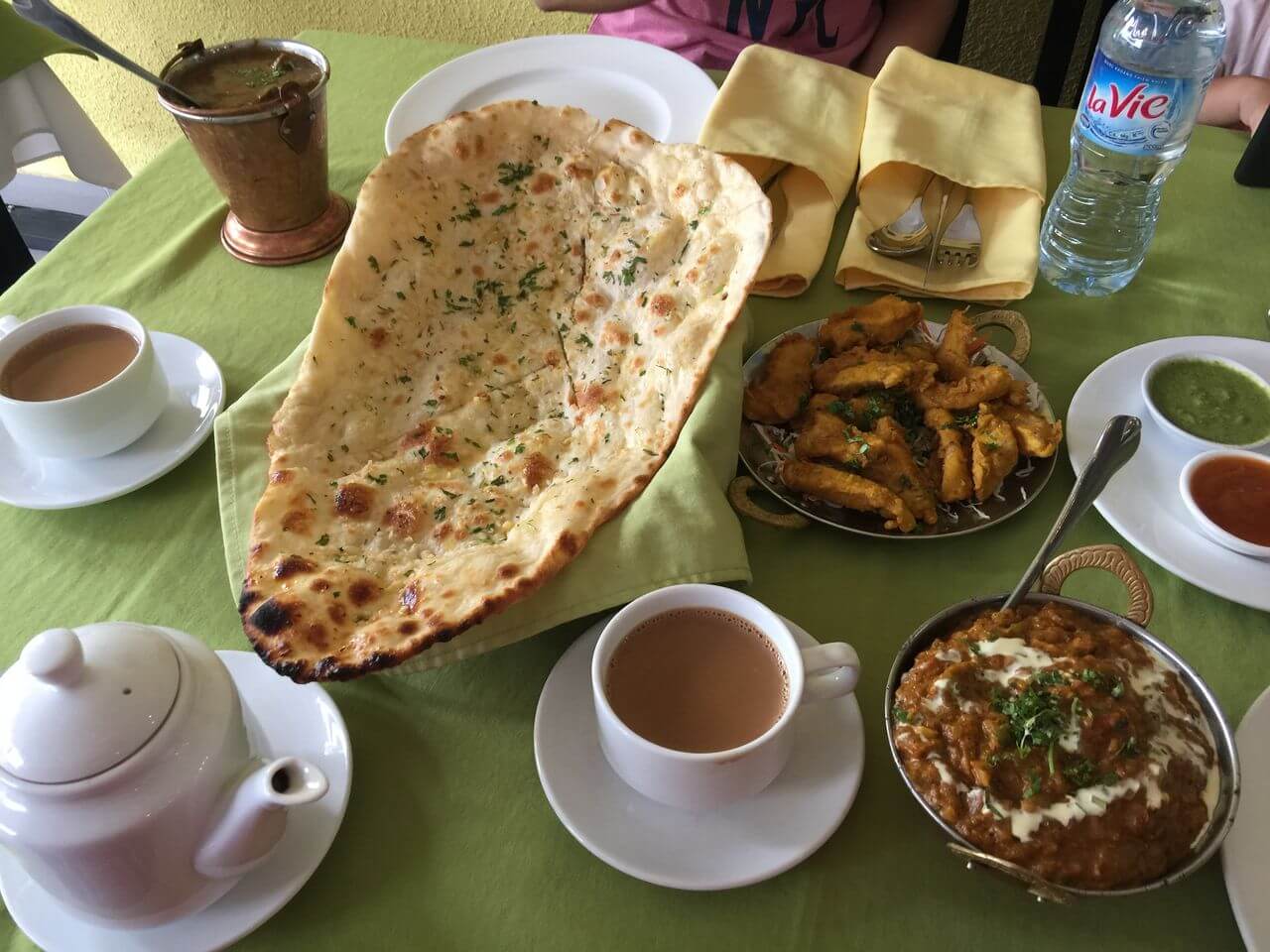
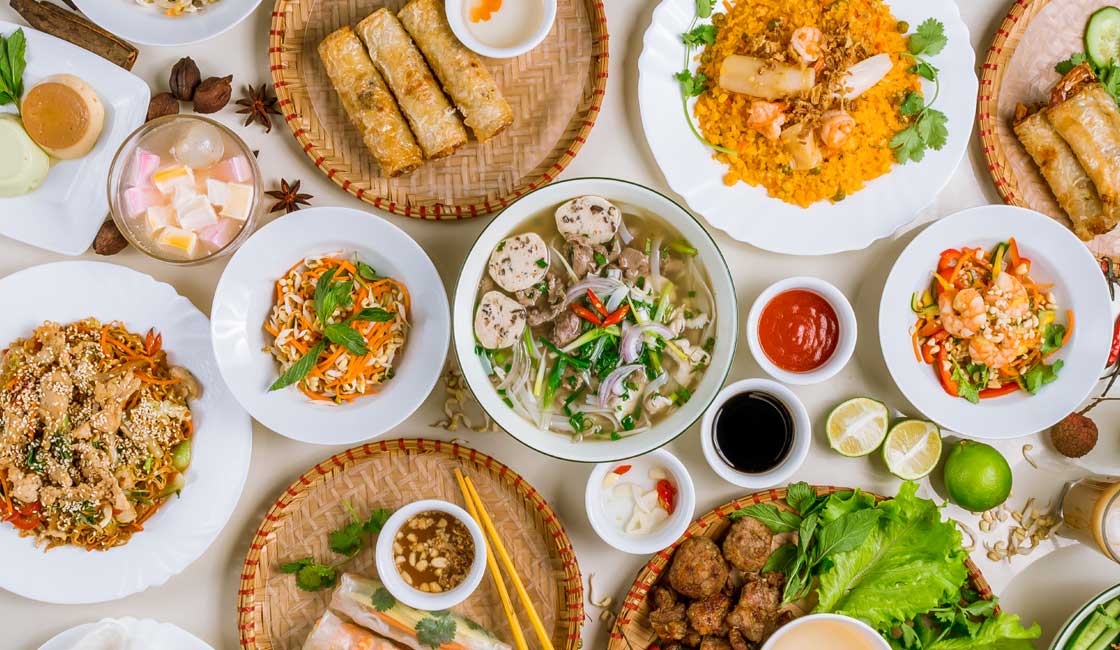
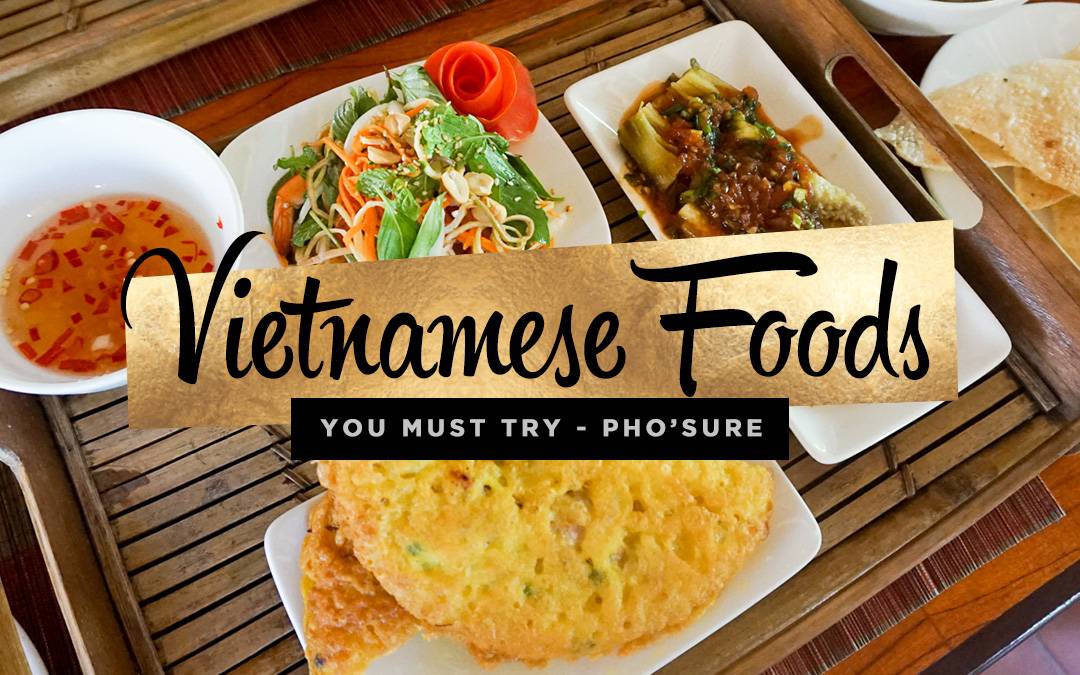
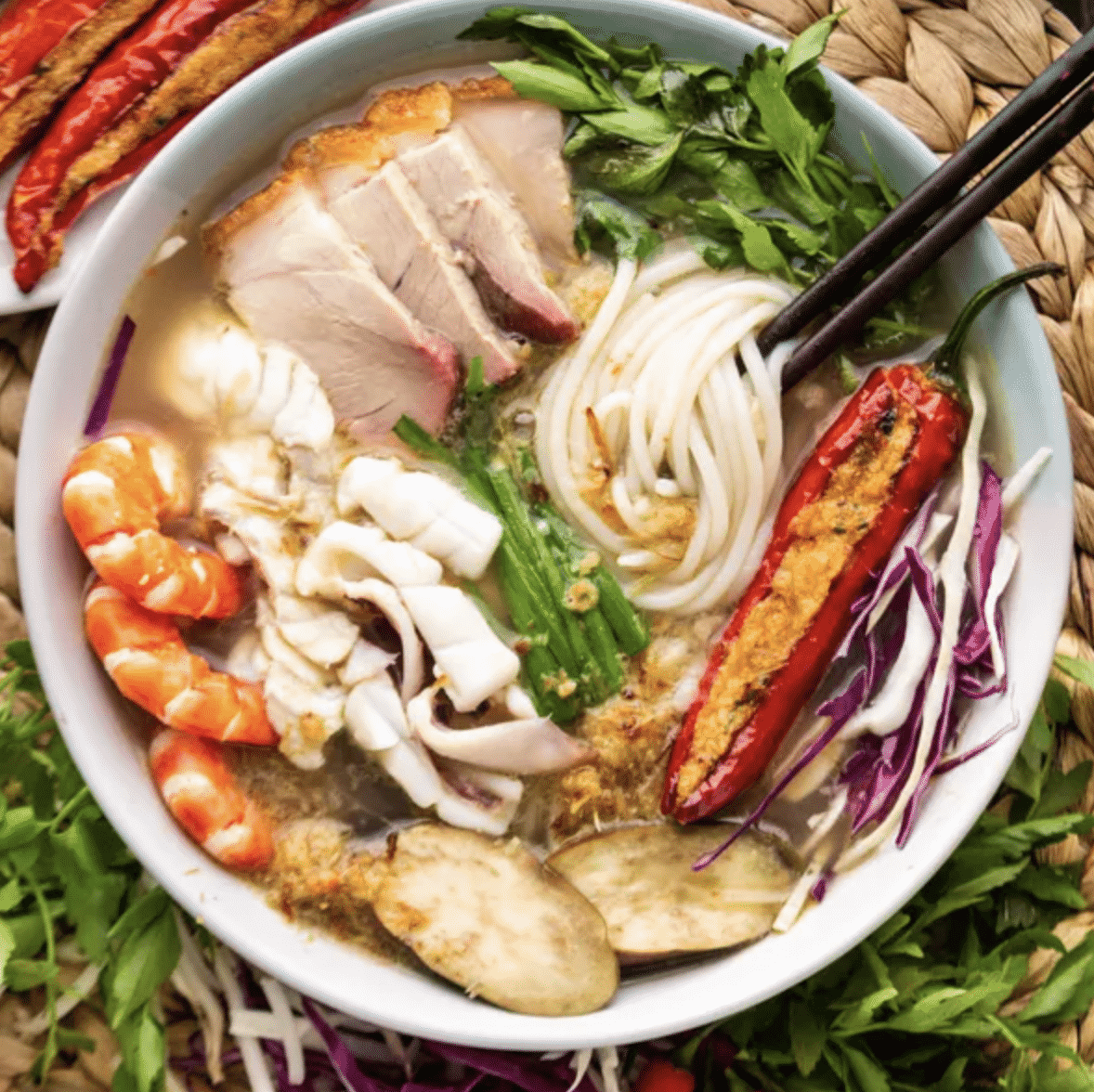
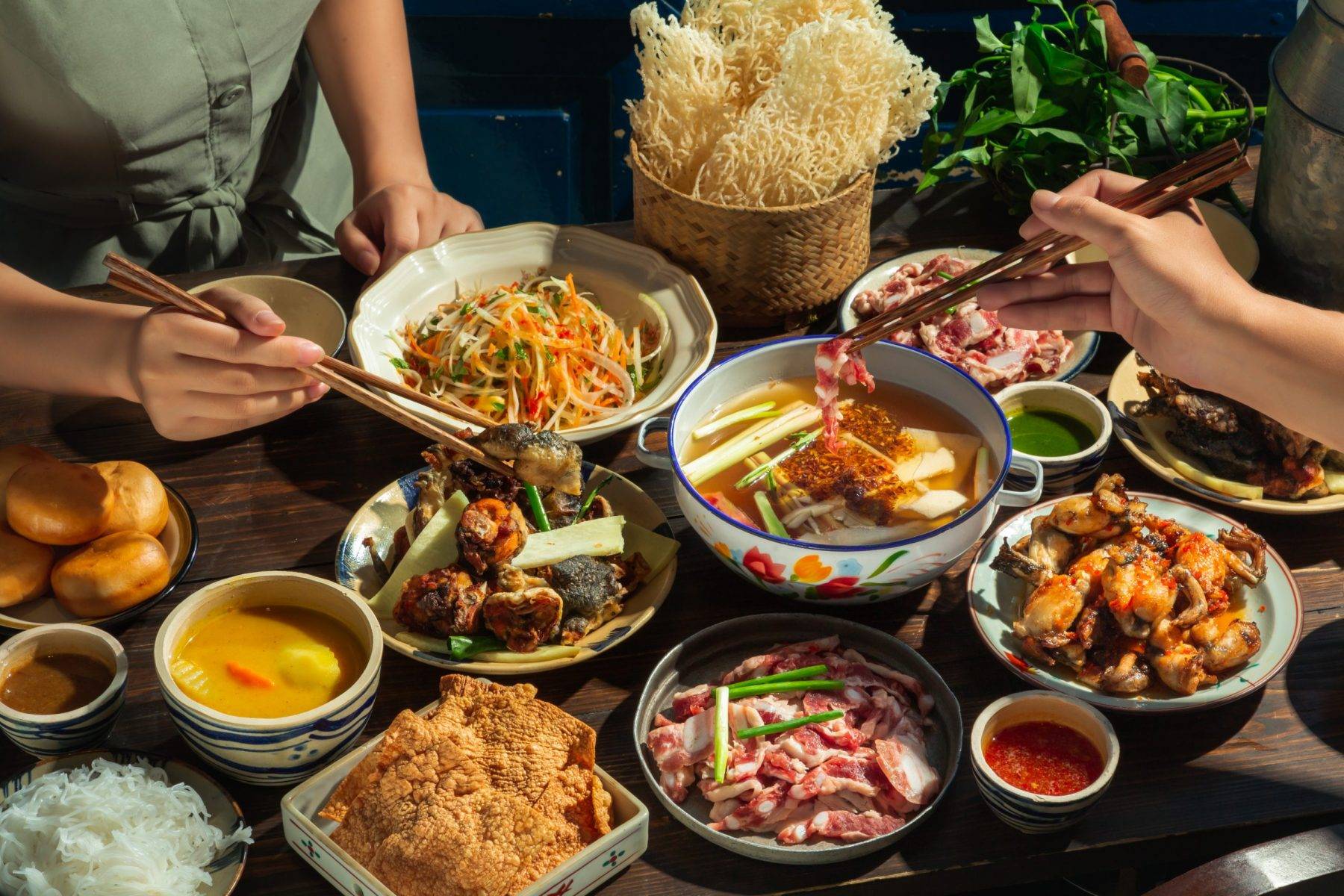
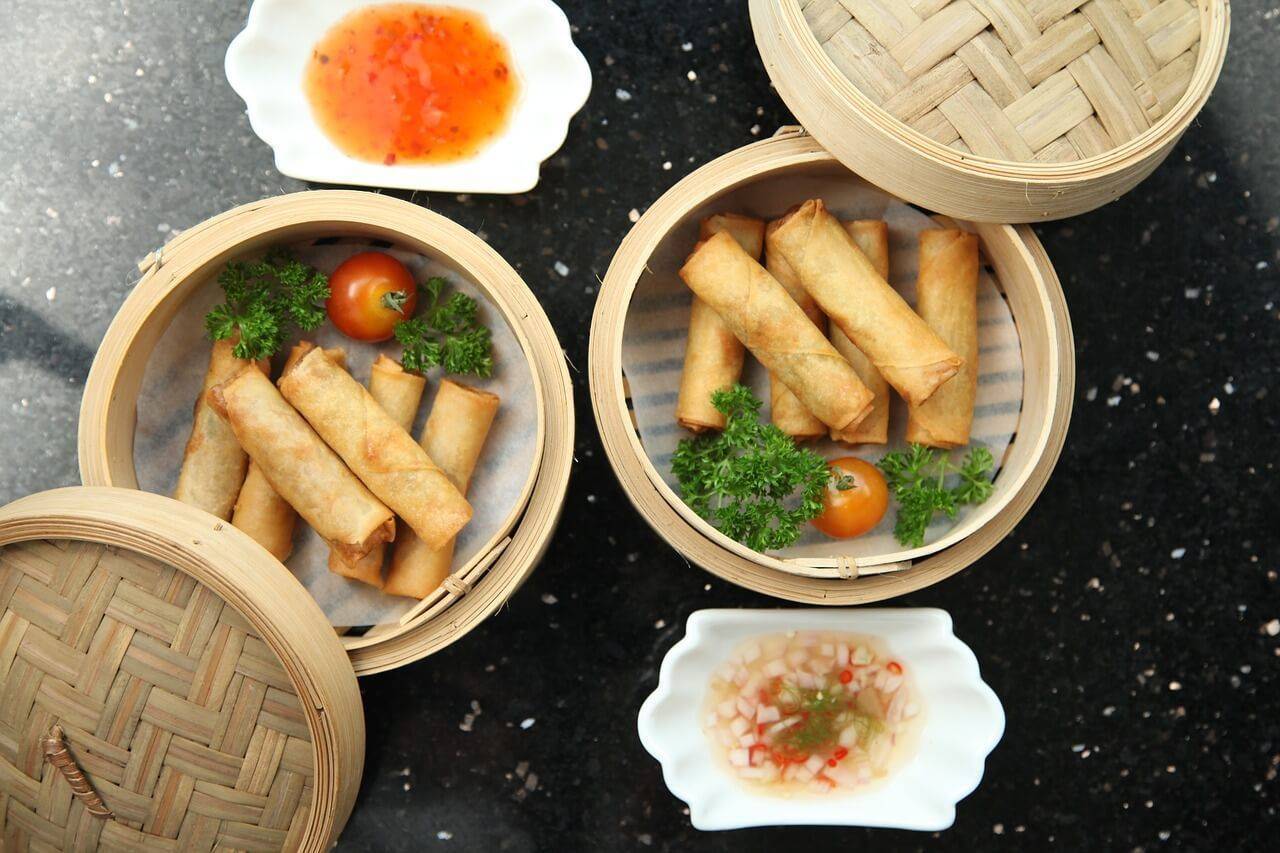
![50 best vietnamese food: vietnam food names [vietnam dishes]](https://thailand-good.ru/wp-content/uploads/8/c/c/8ccf67f7fc8434df3af502274e3a5ebb.jpeg)
